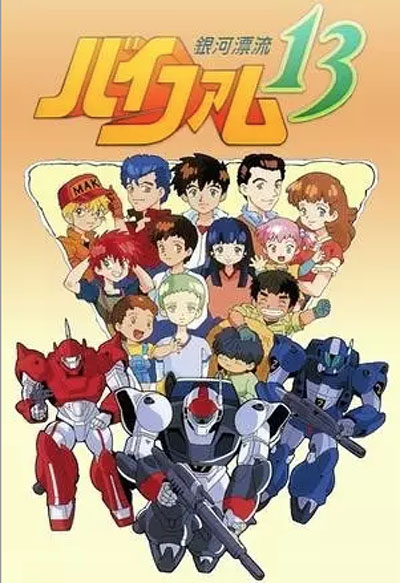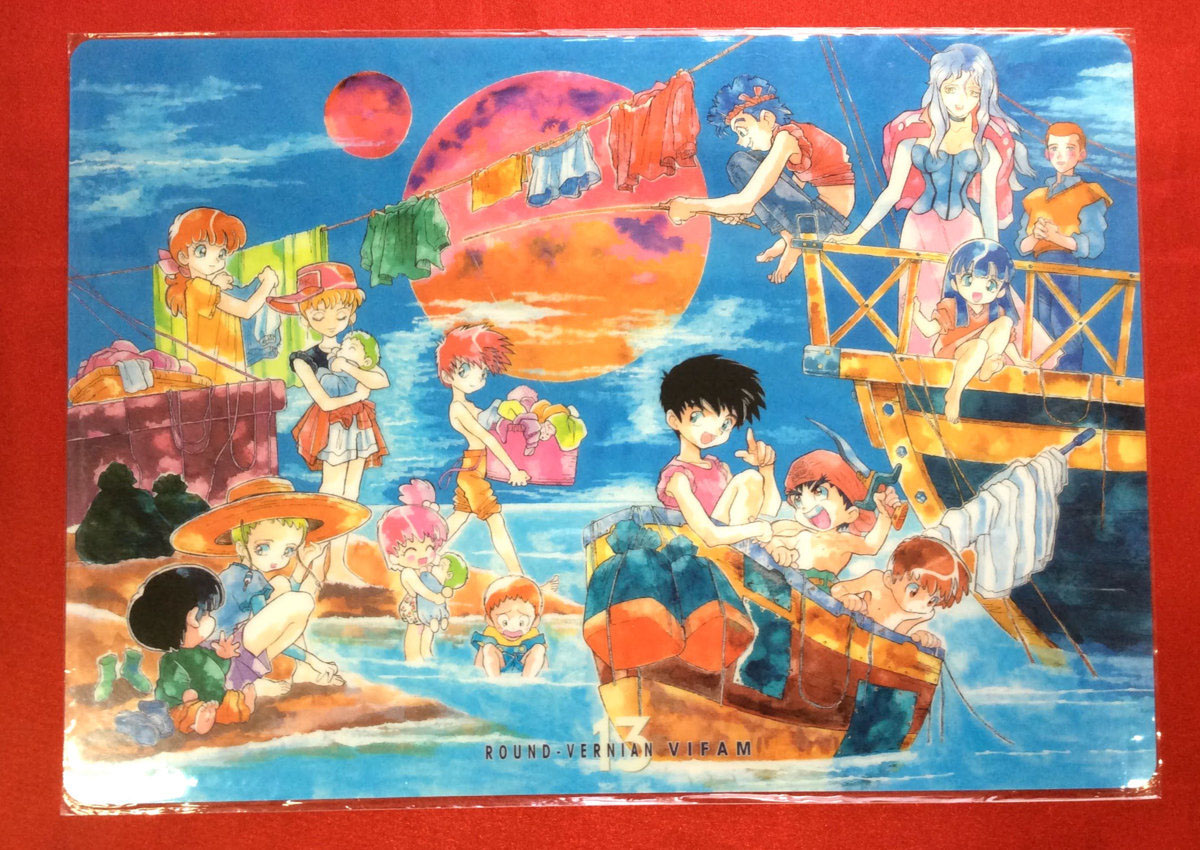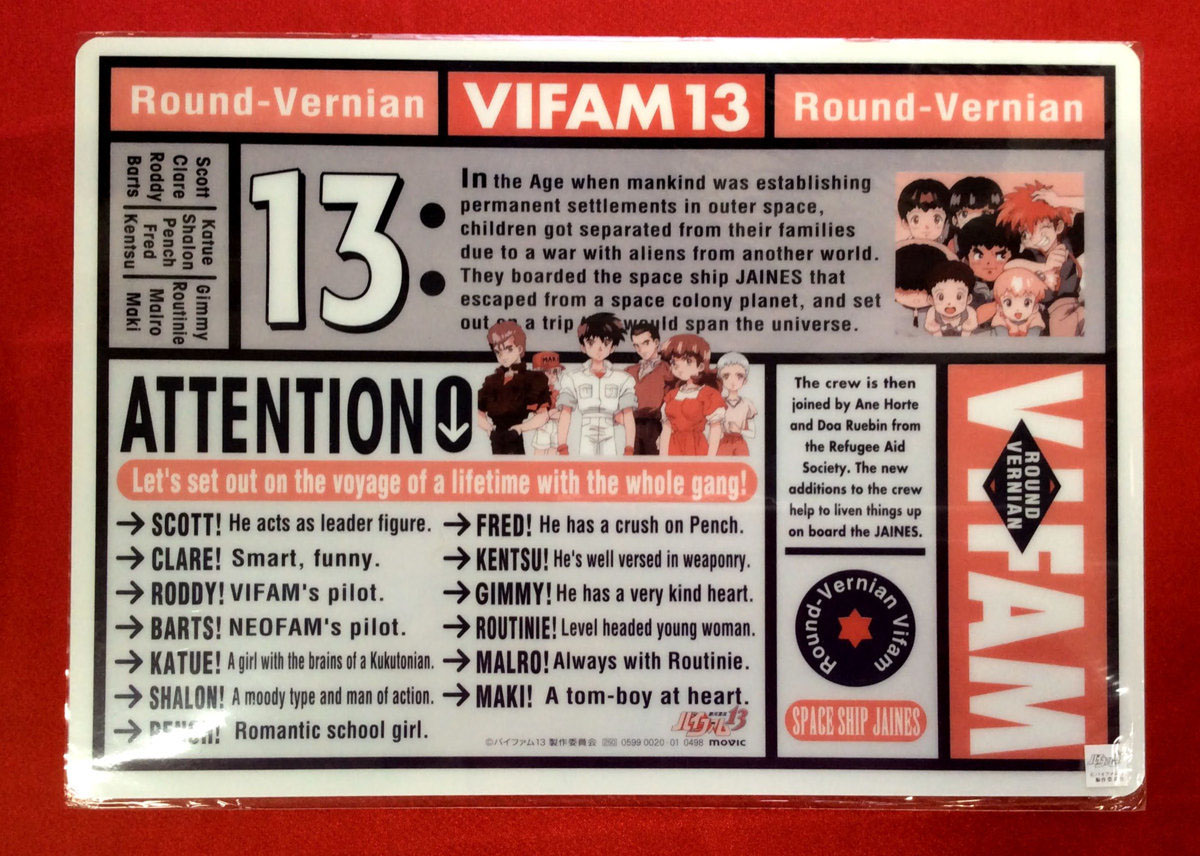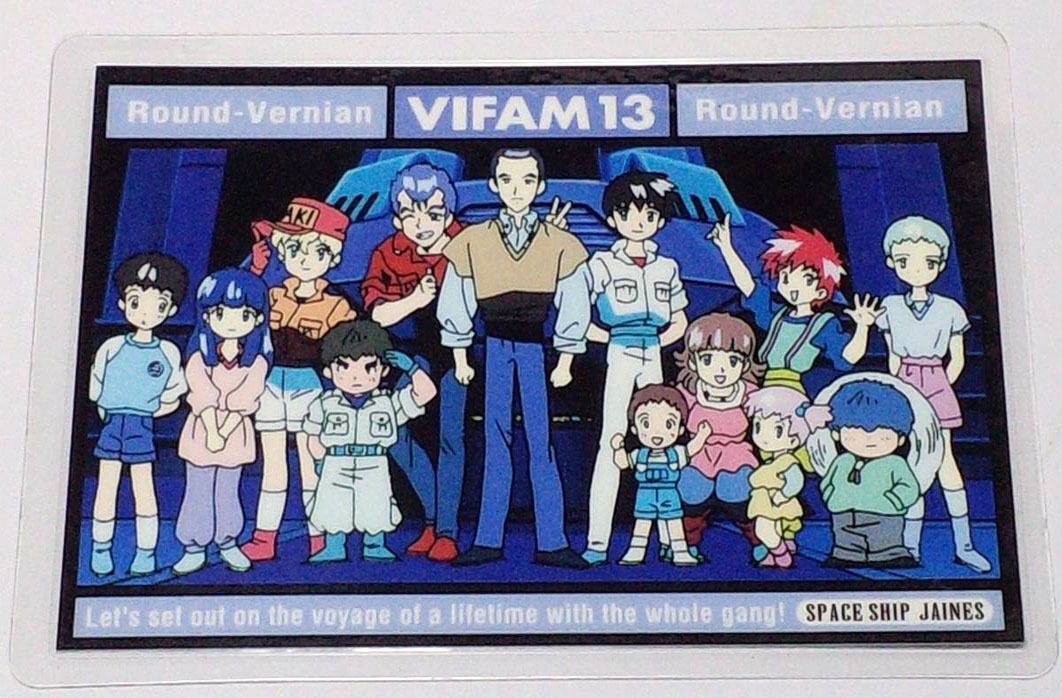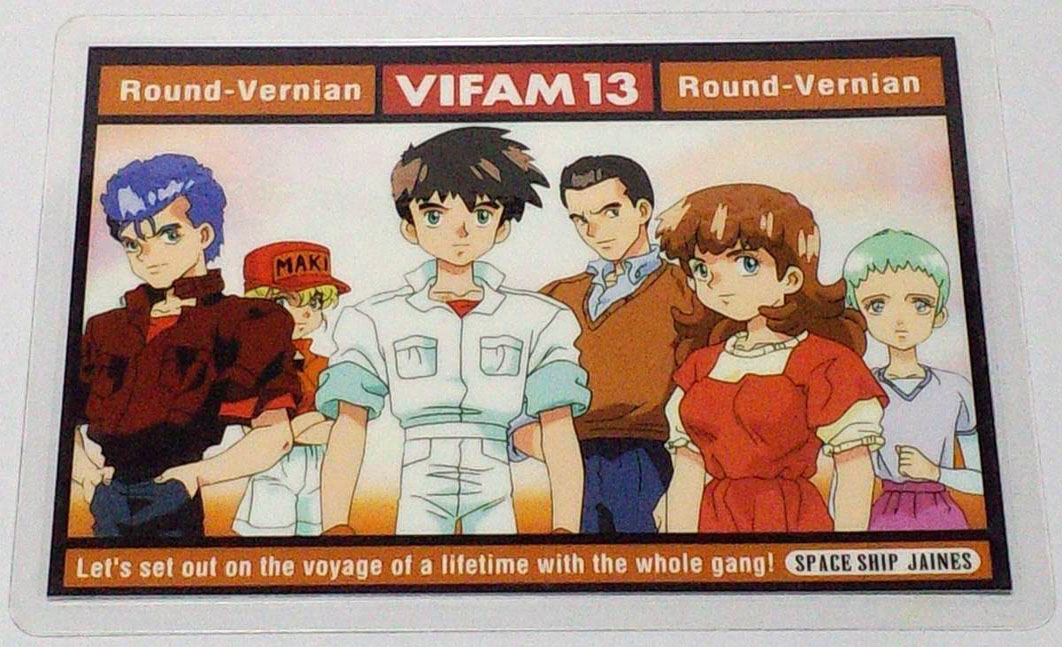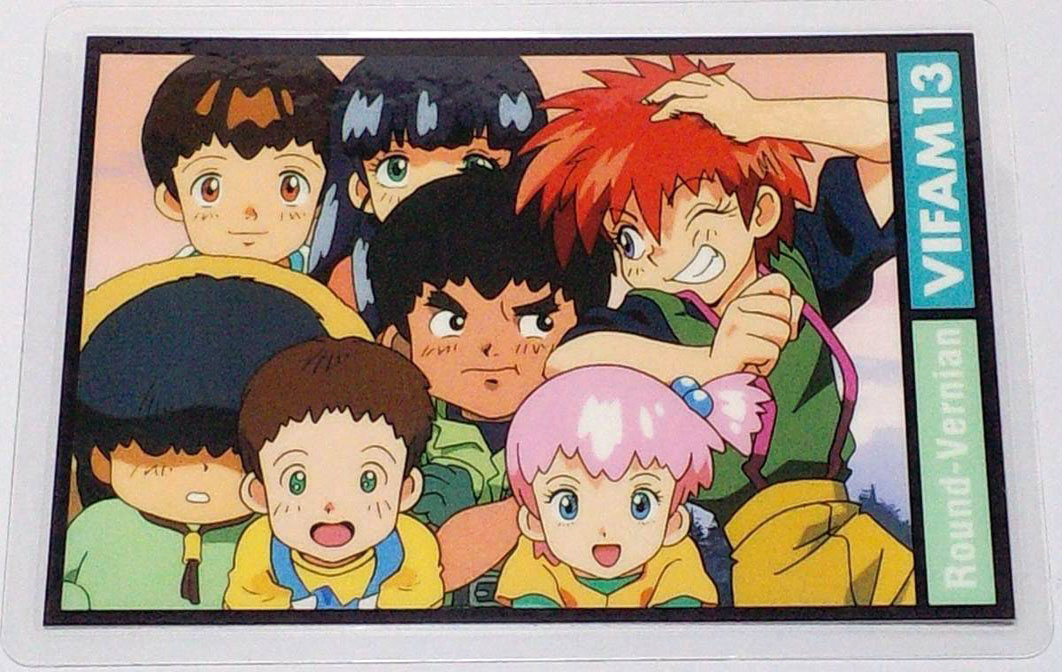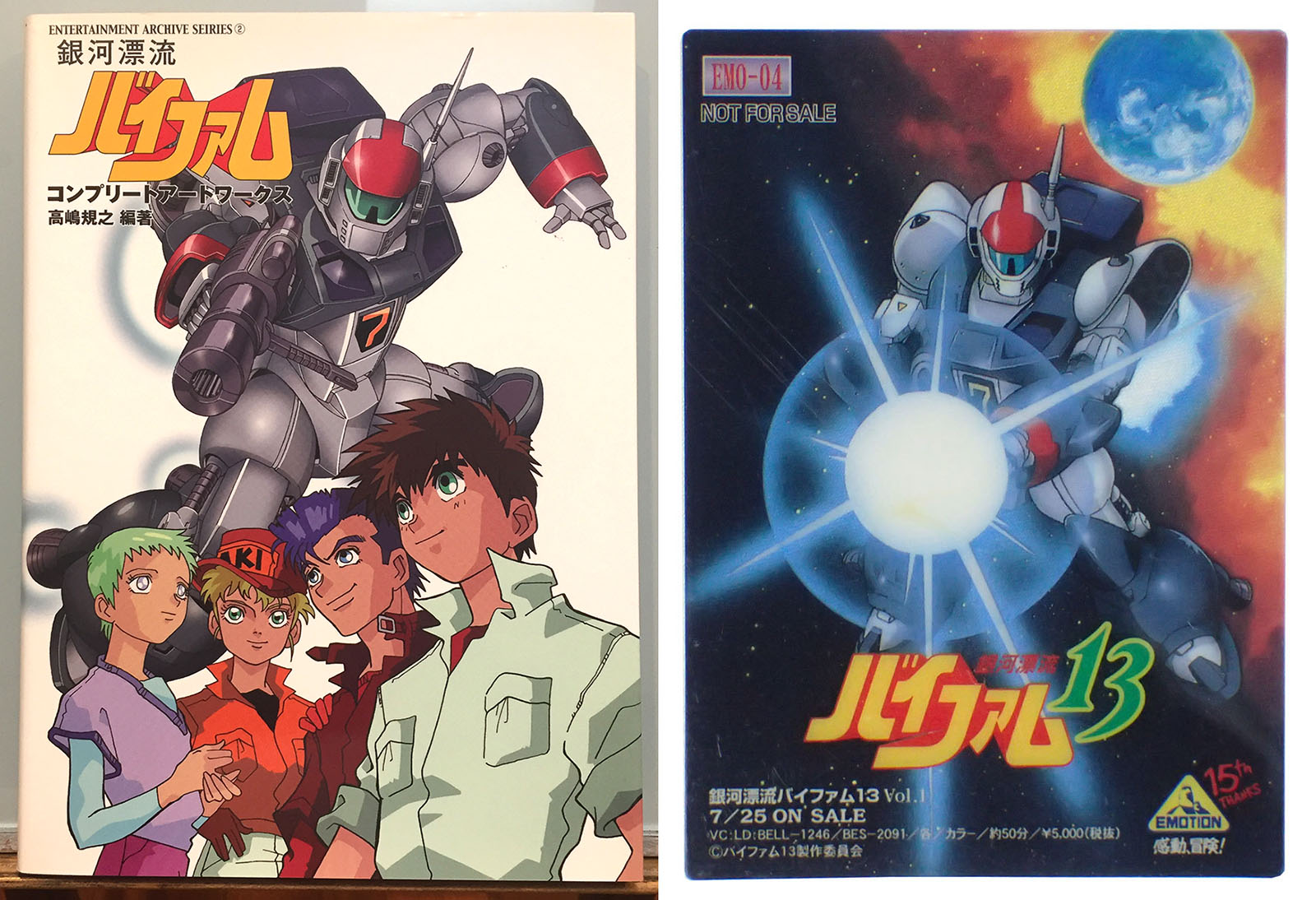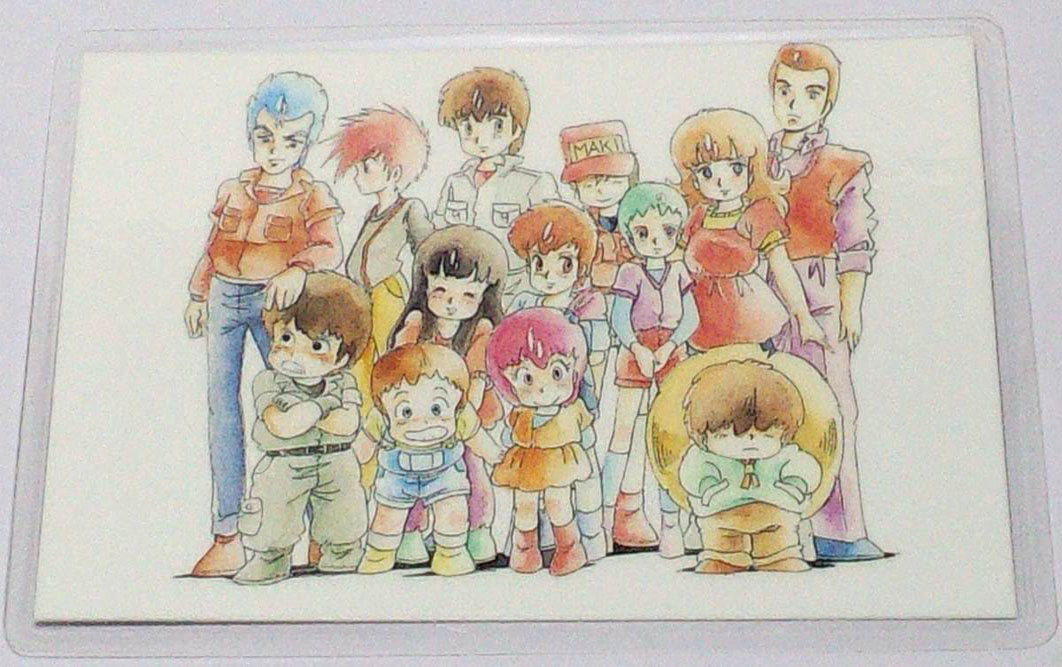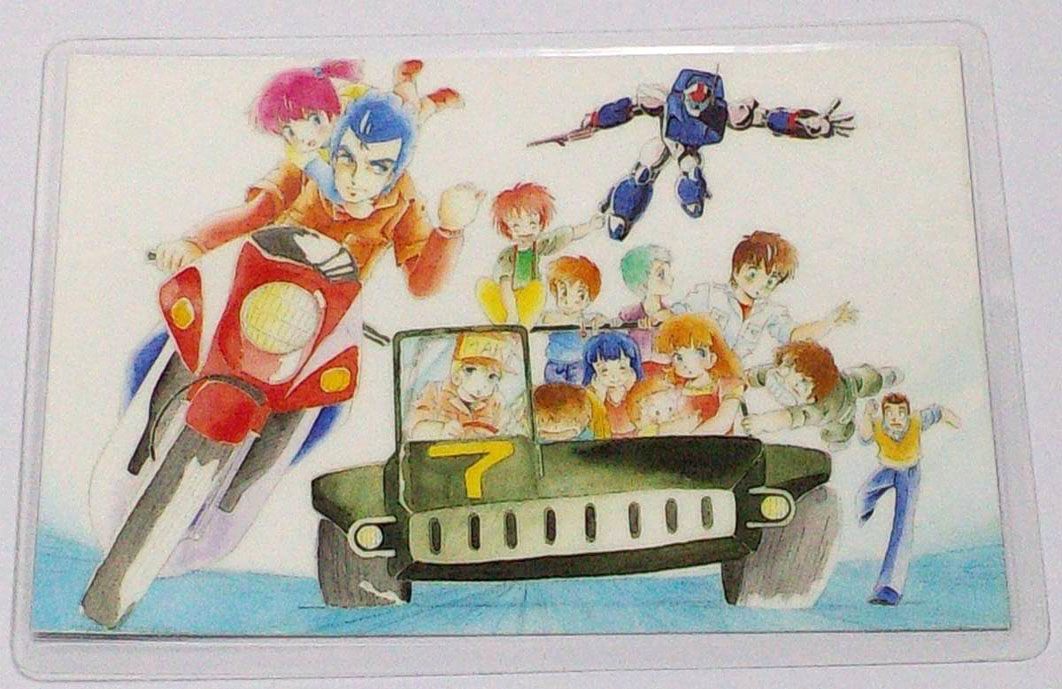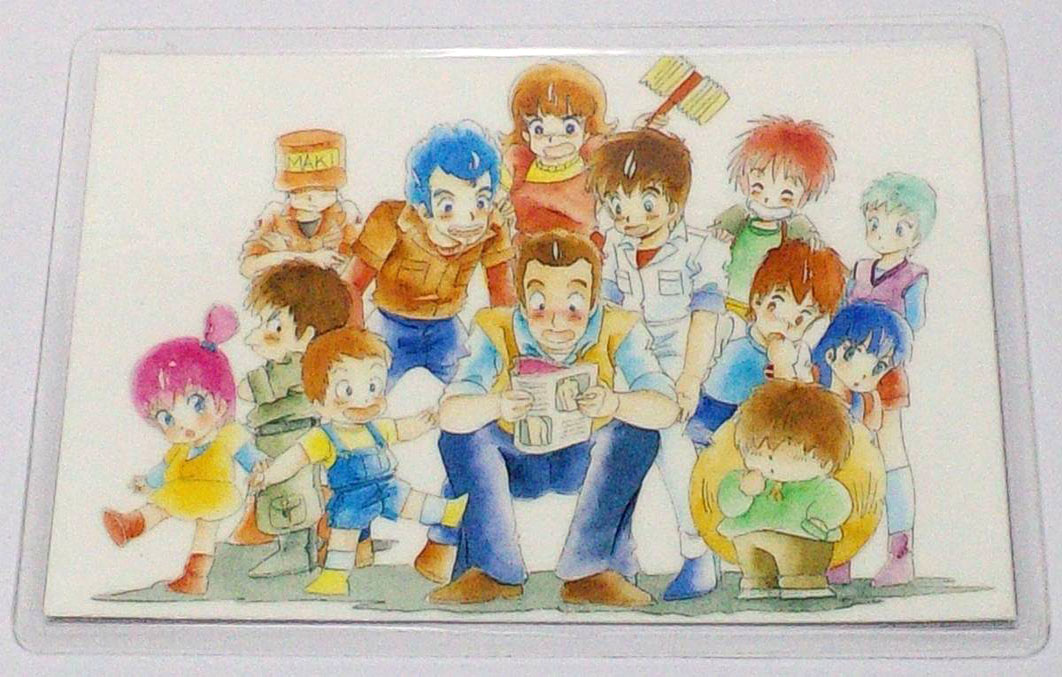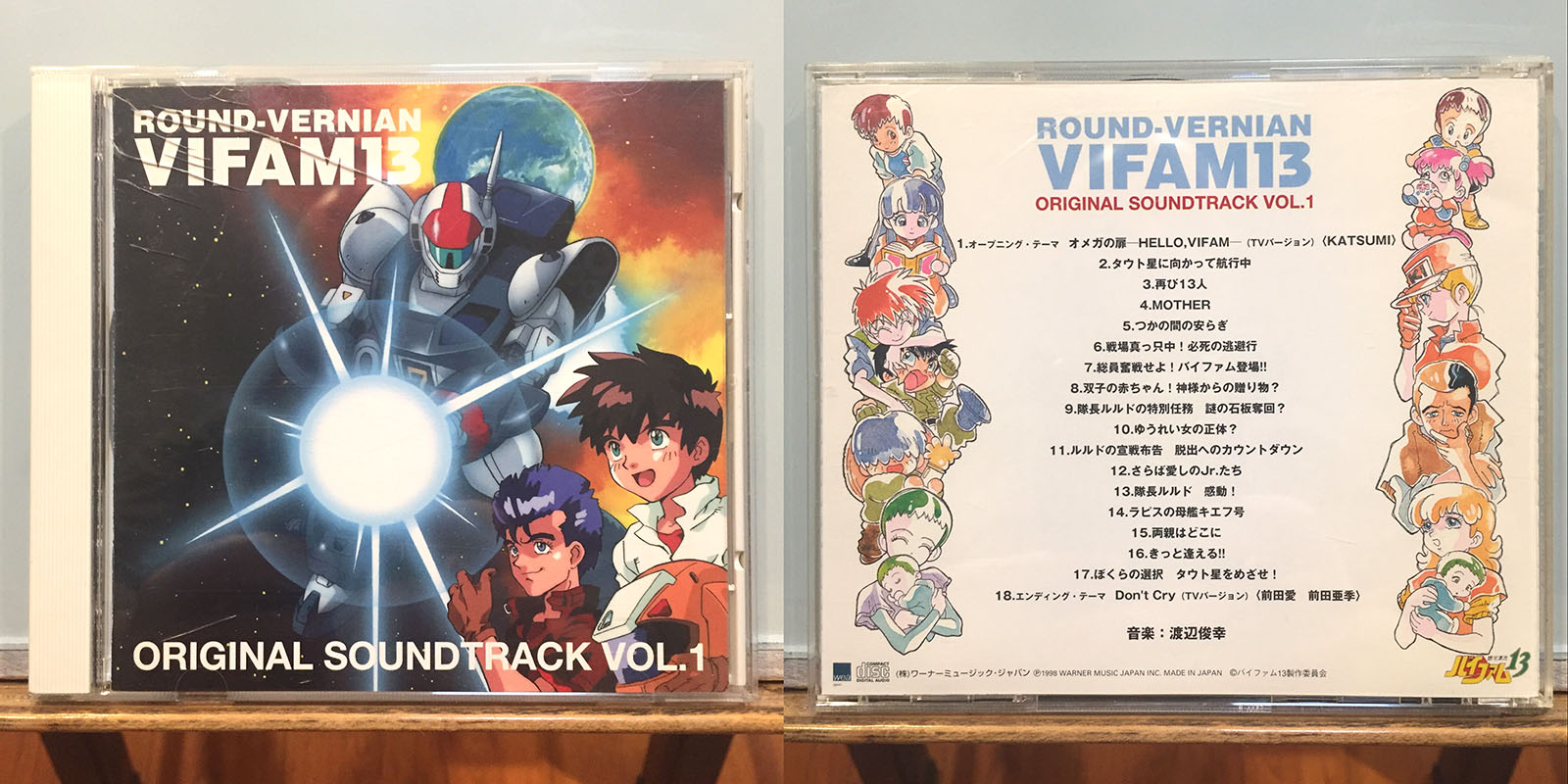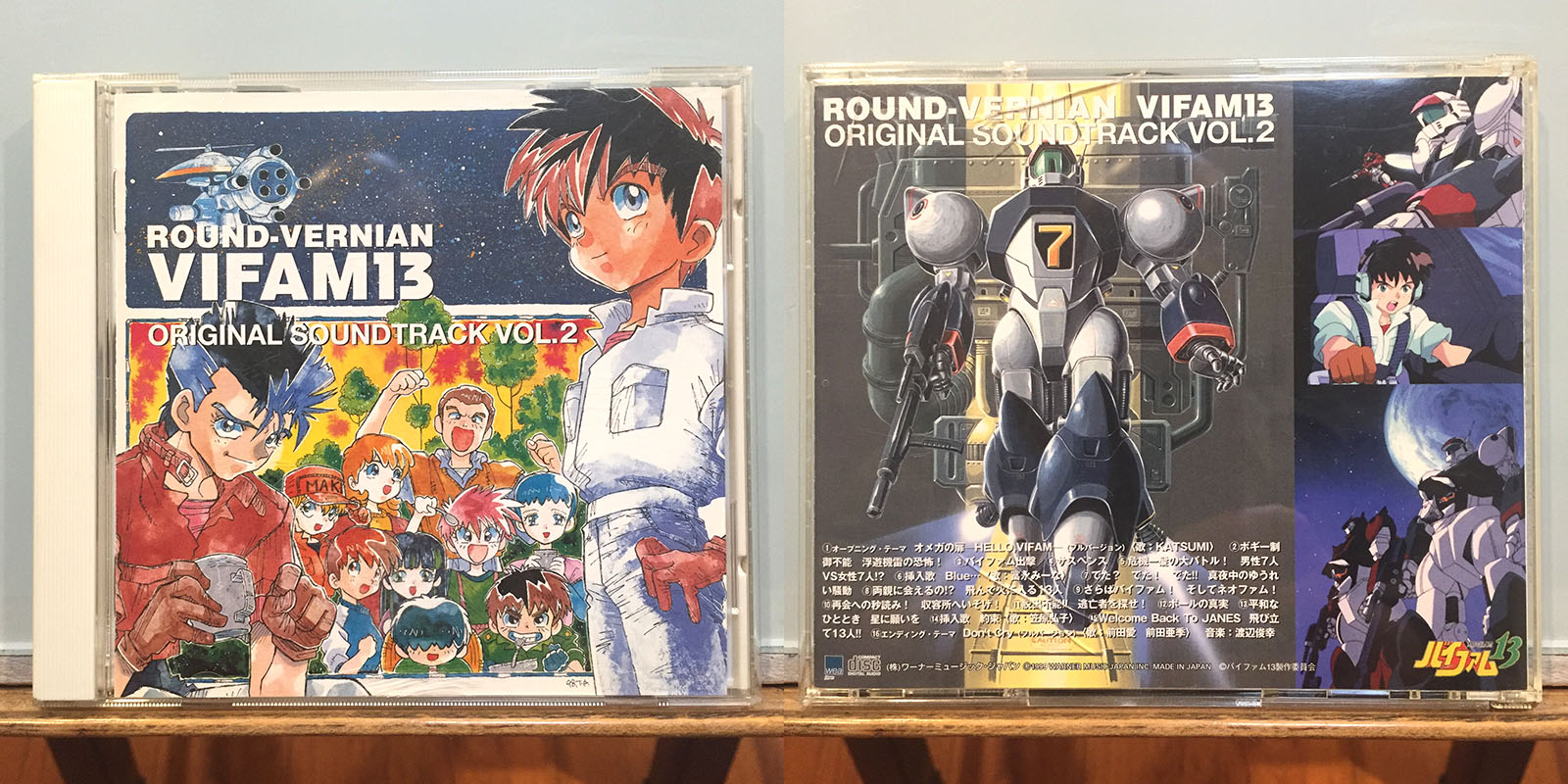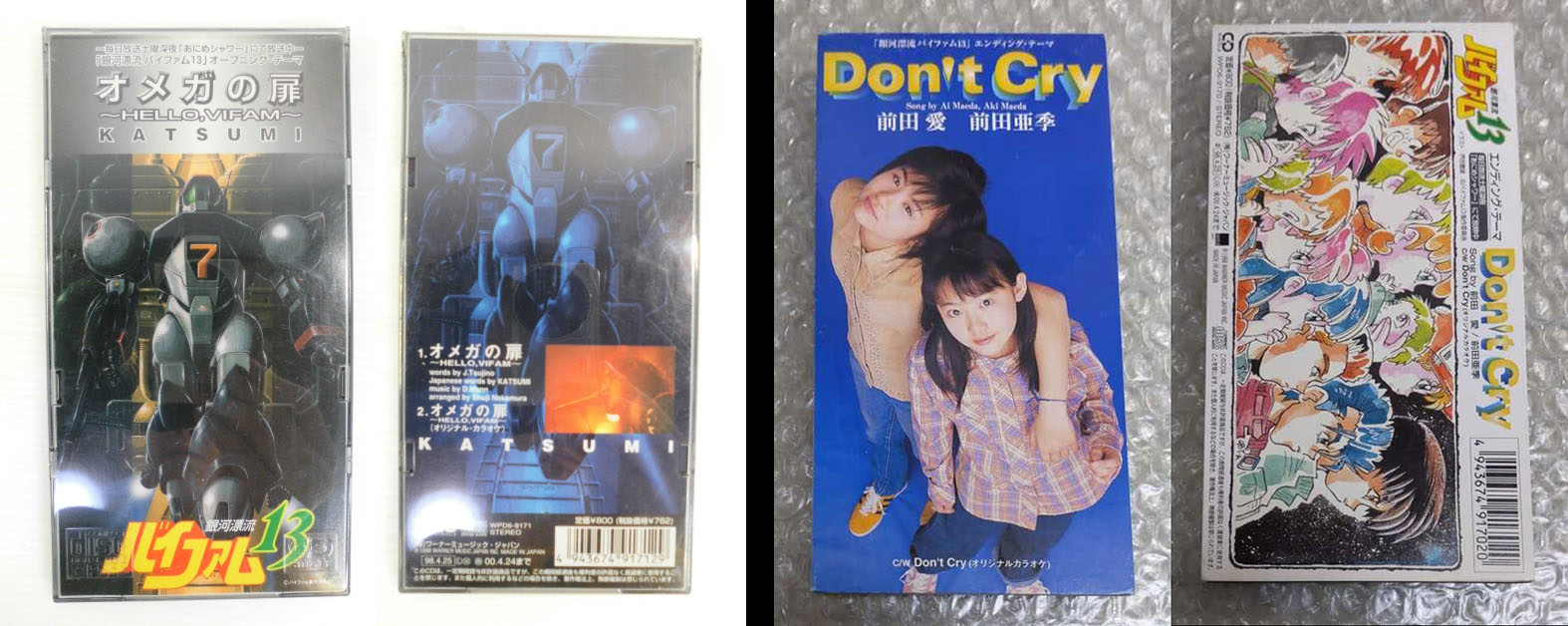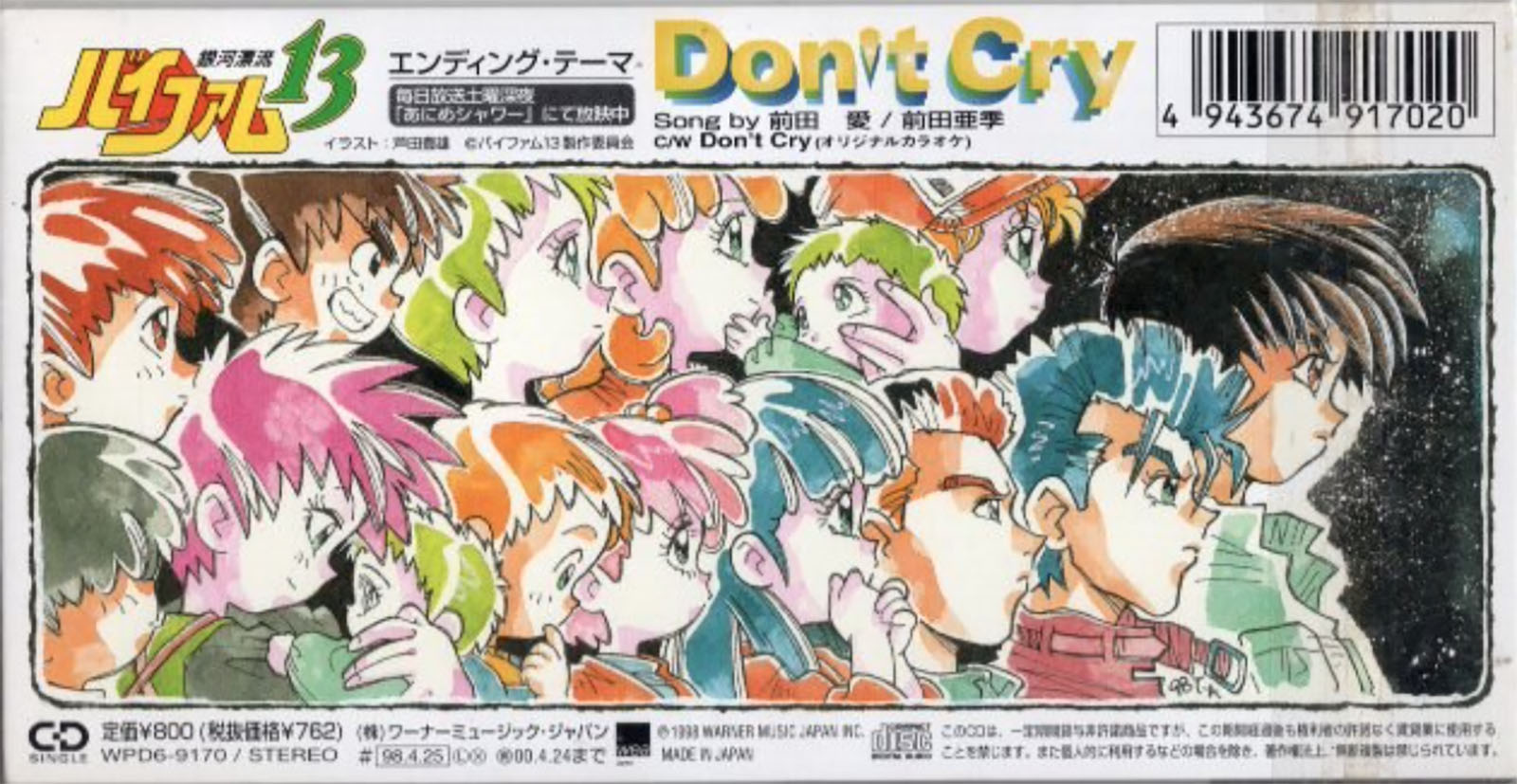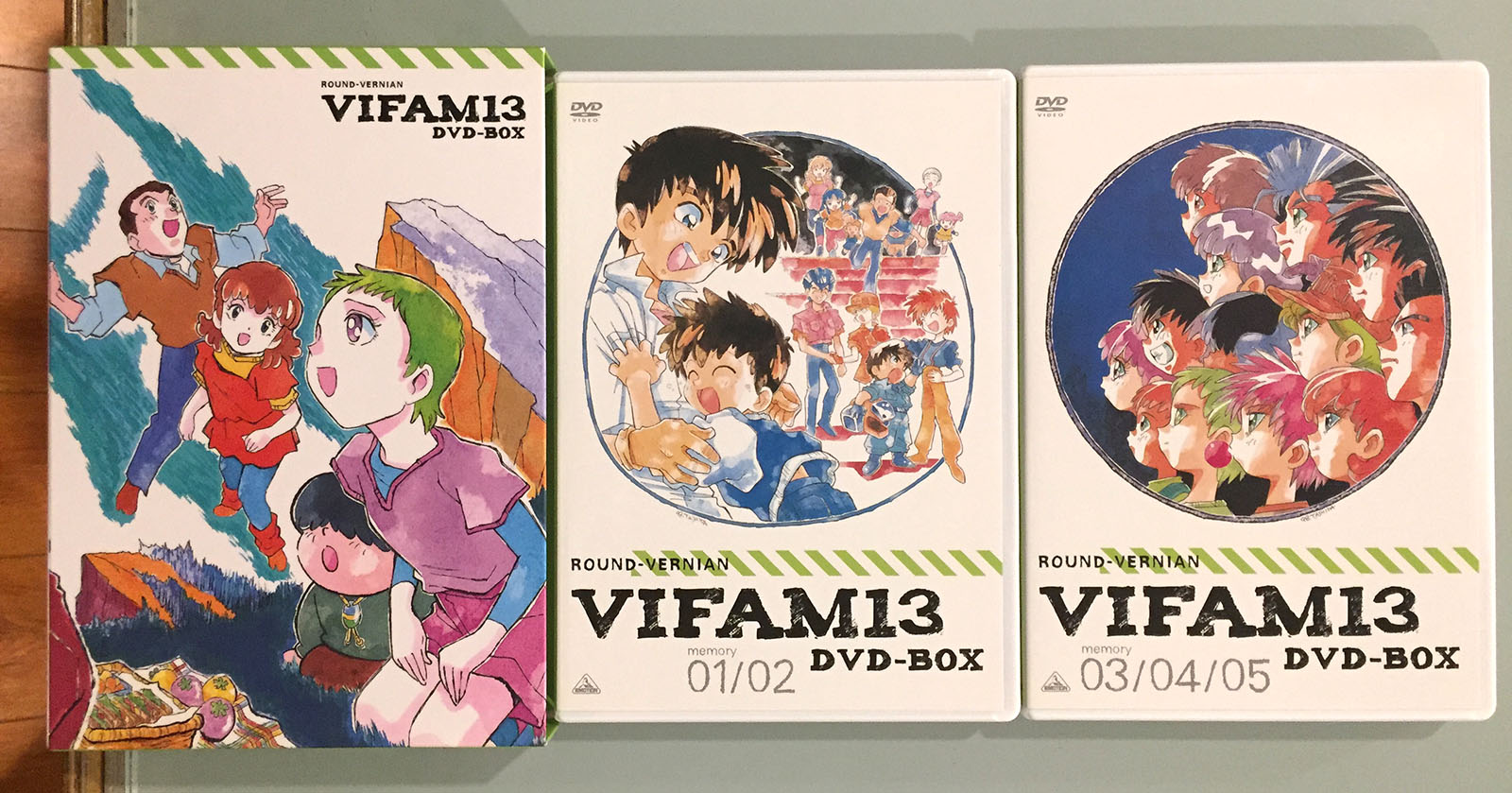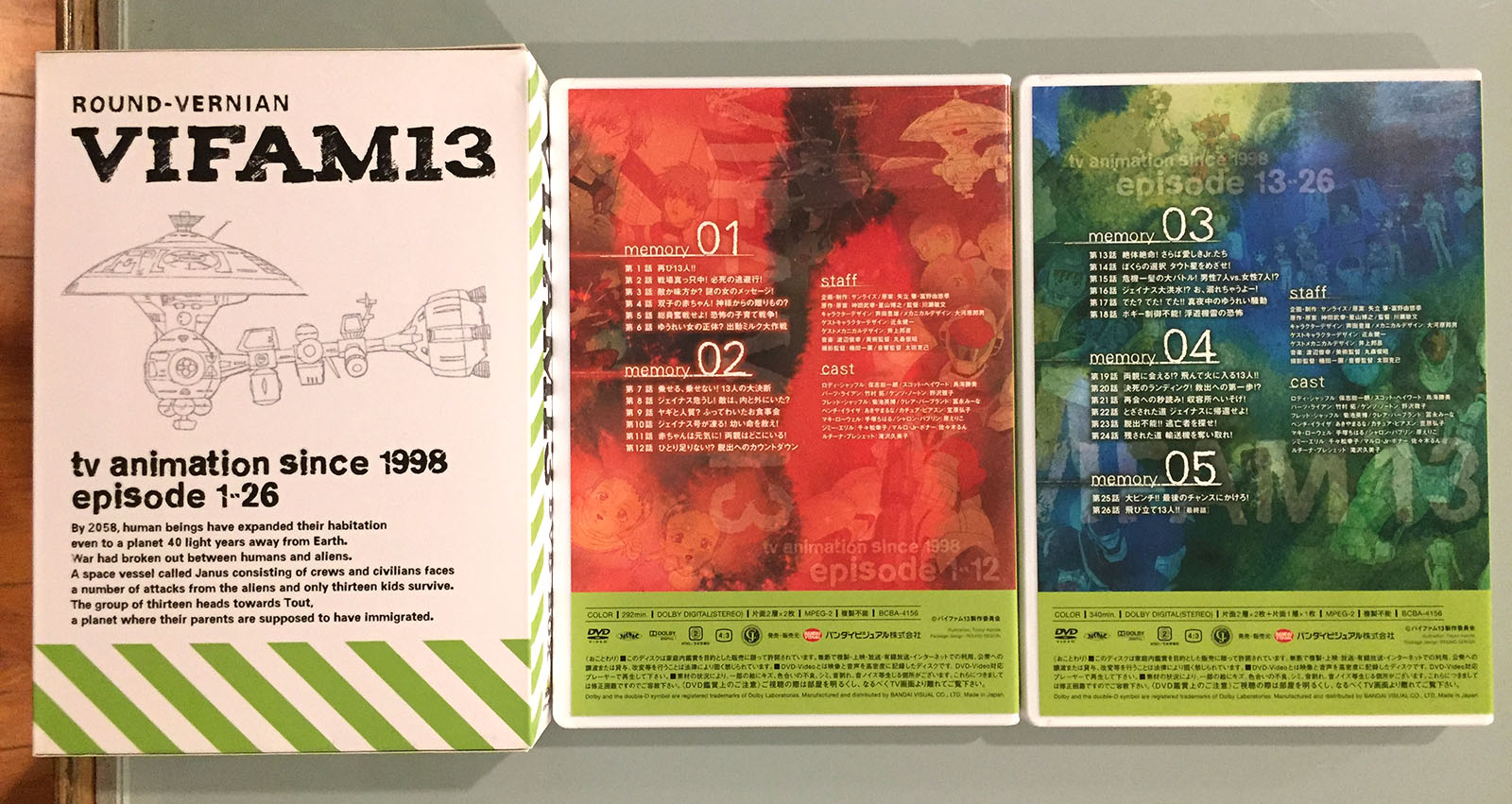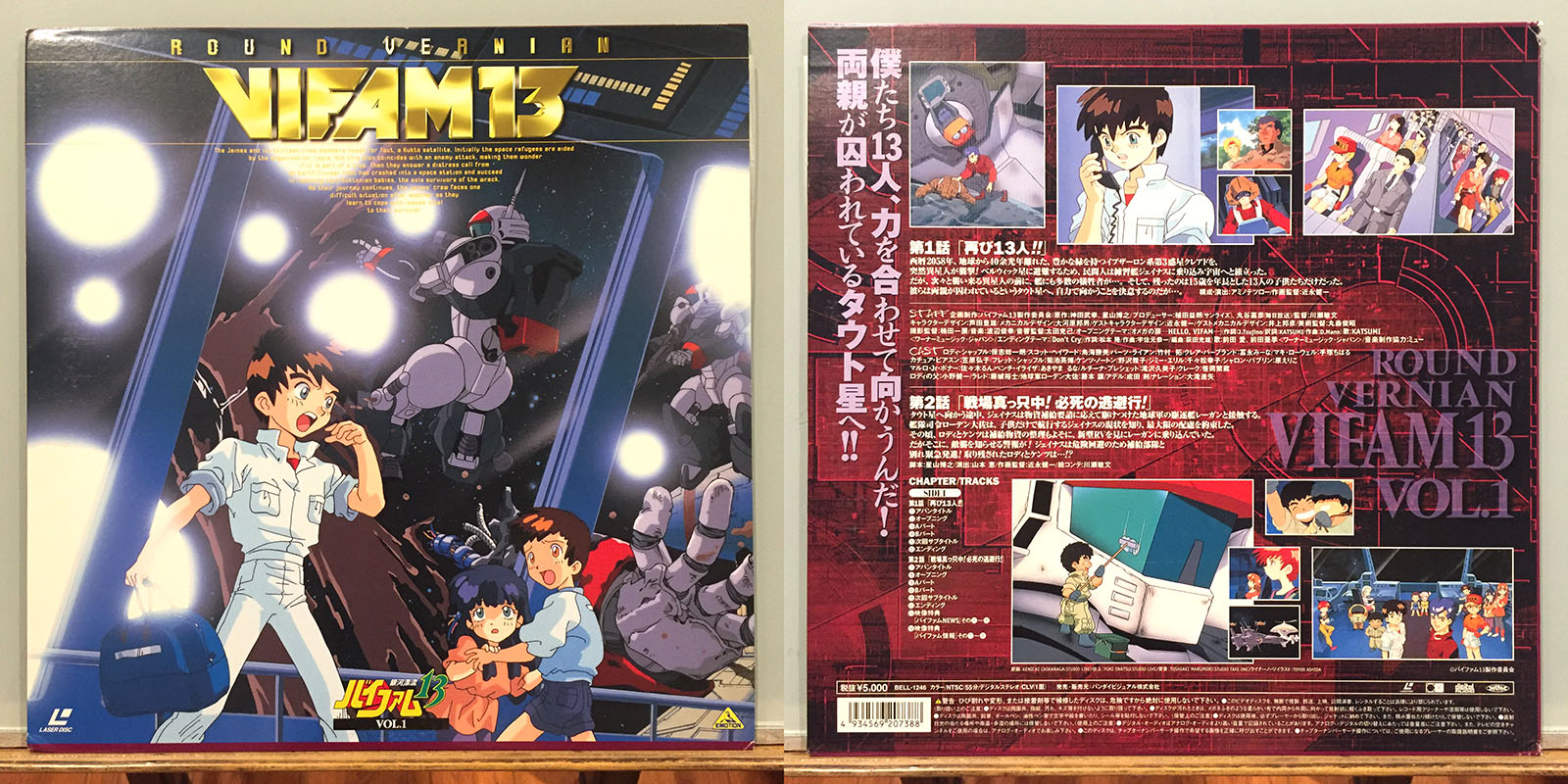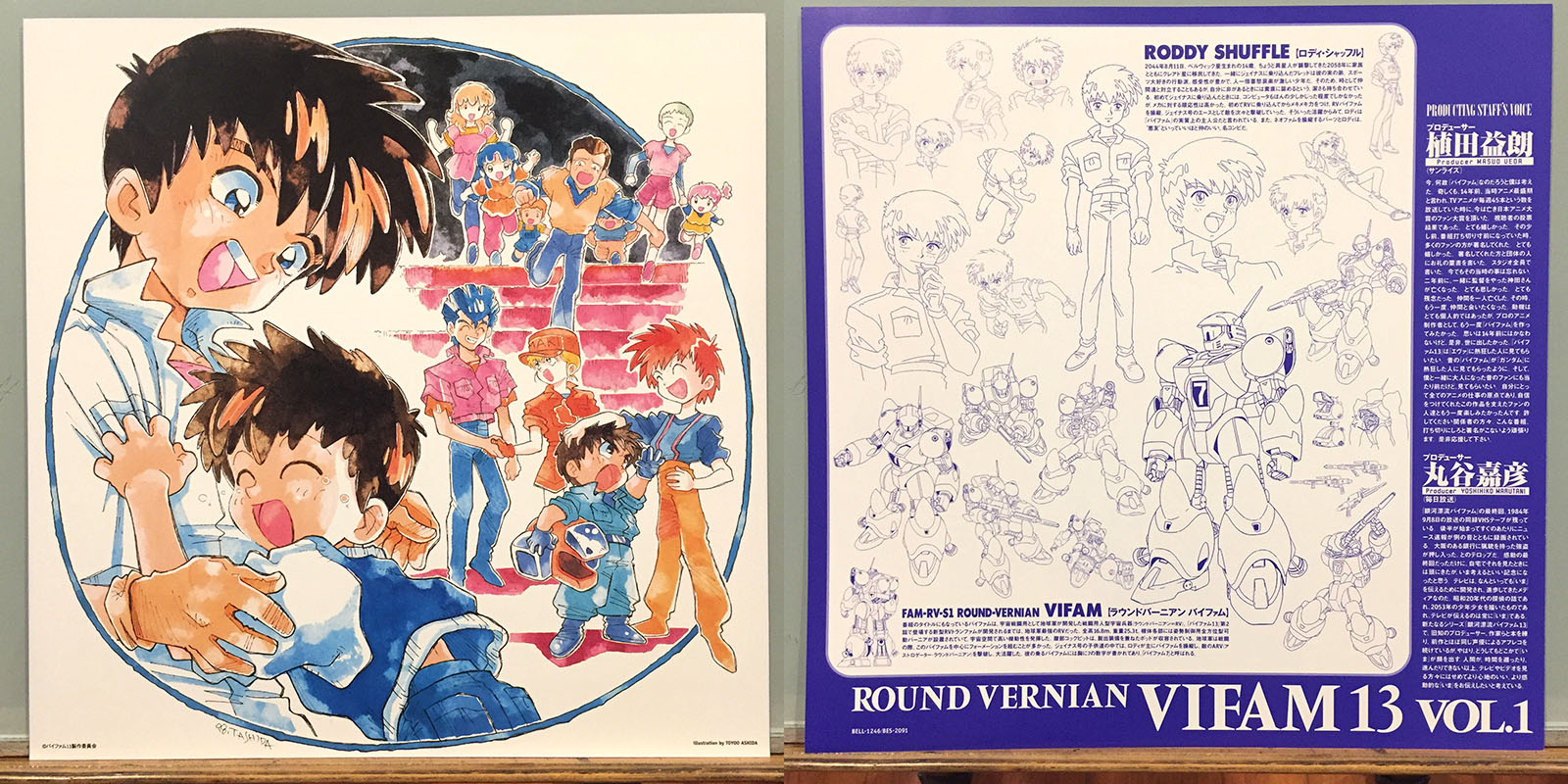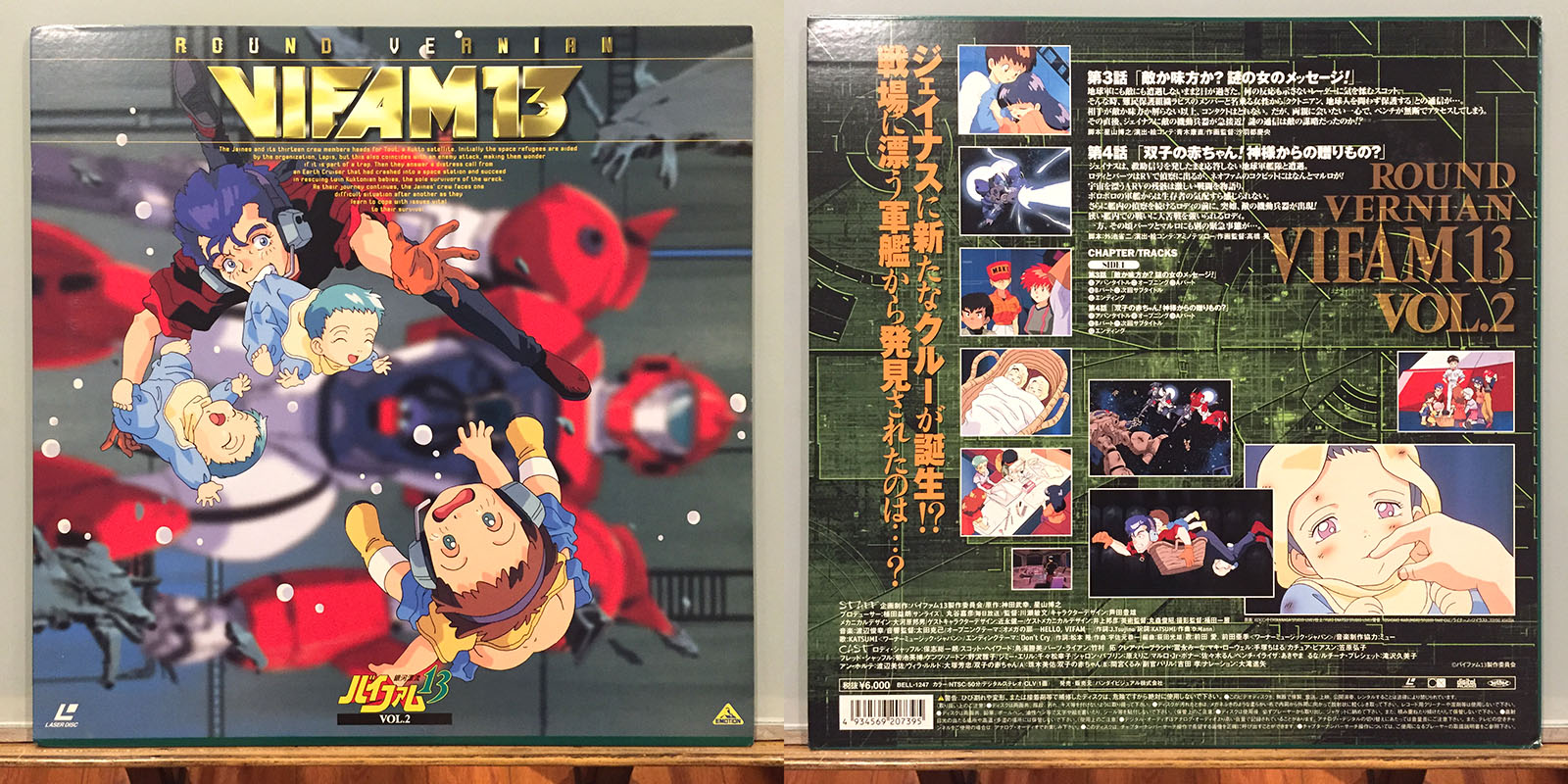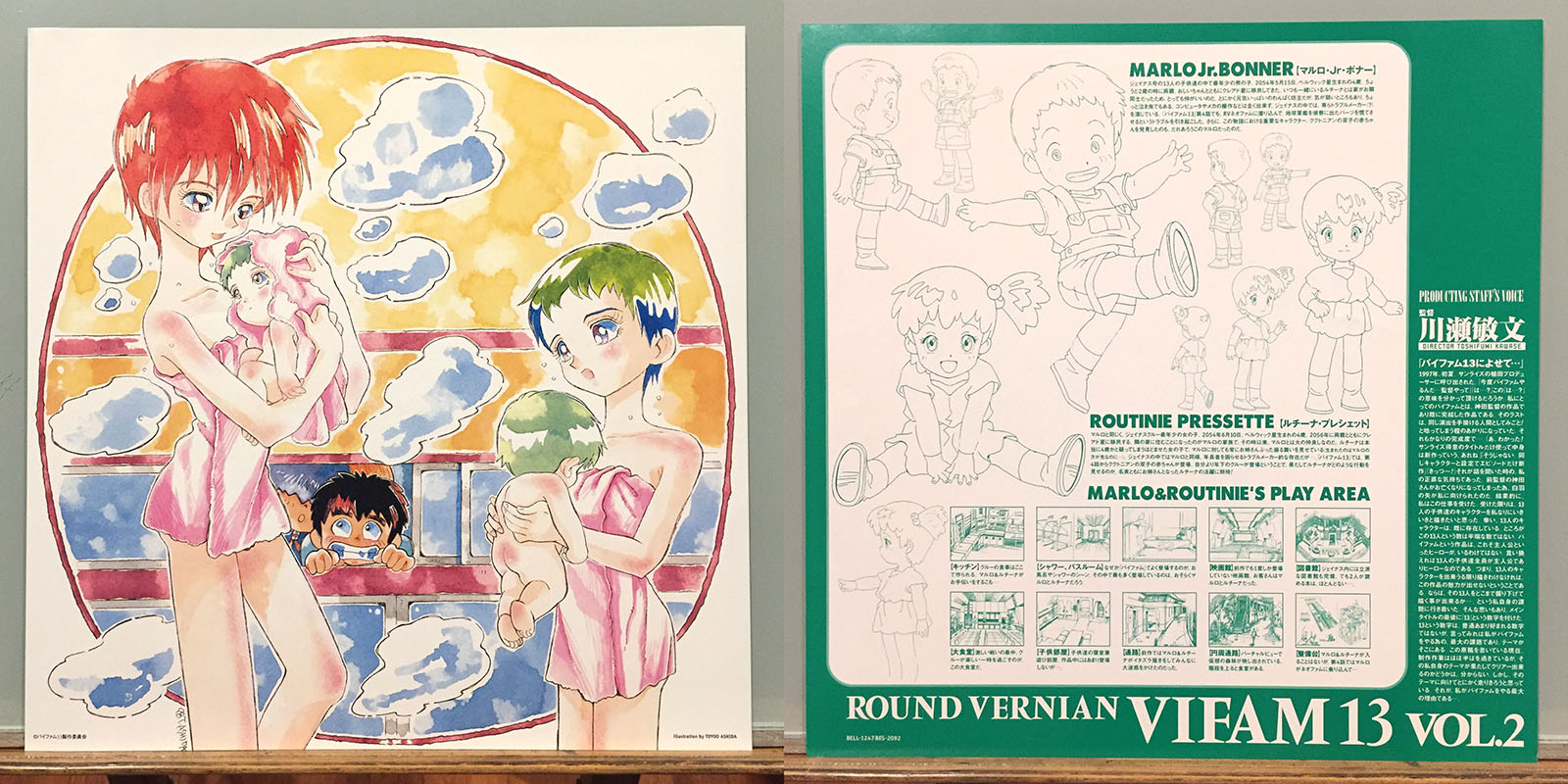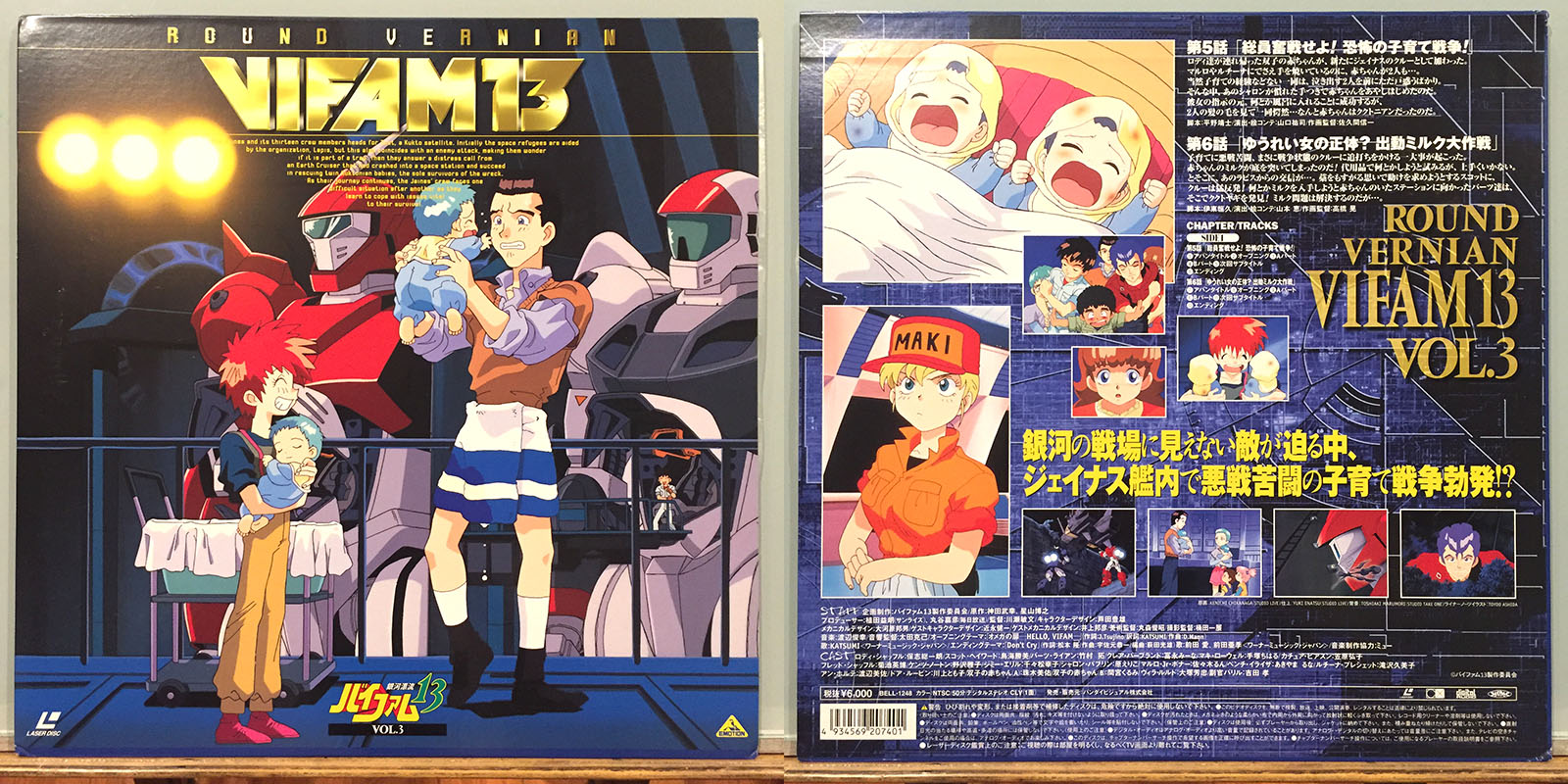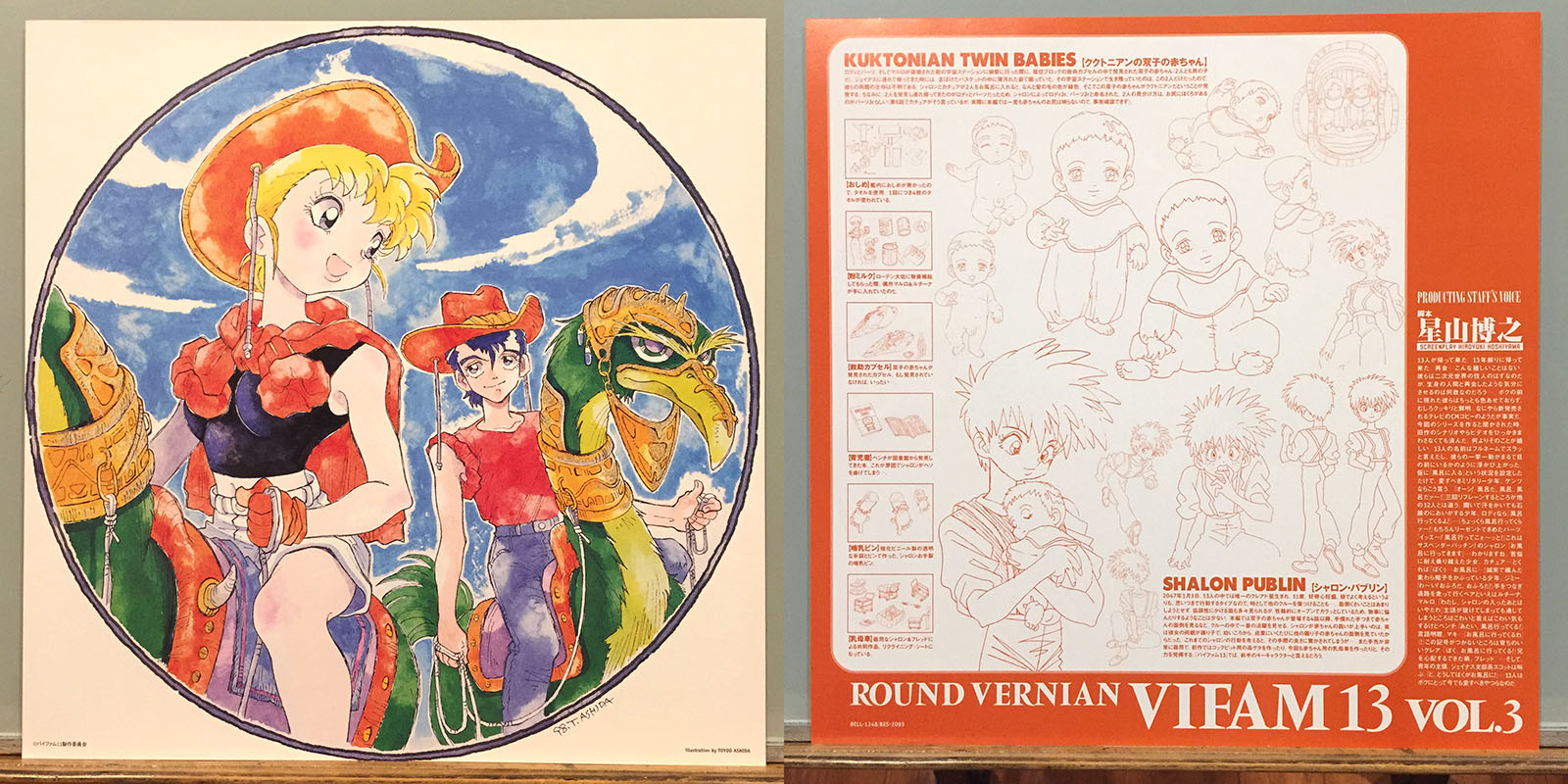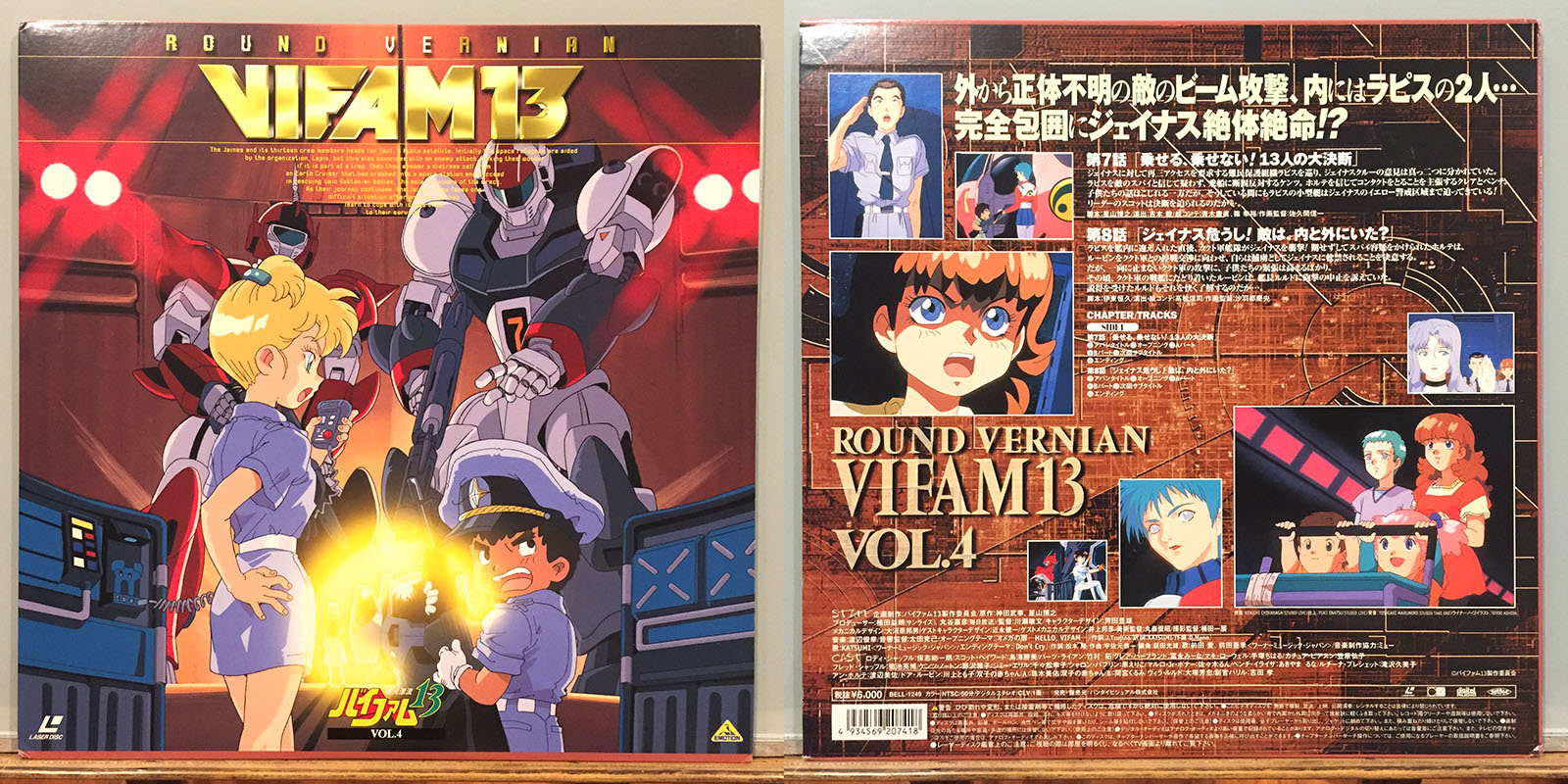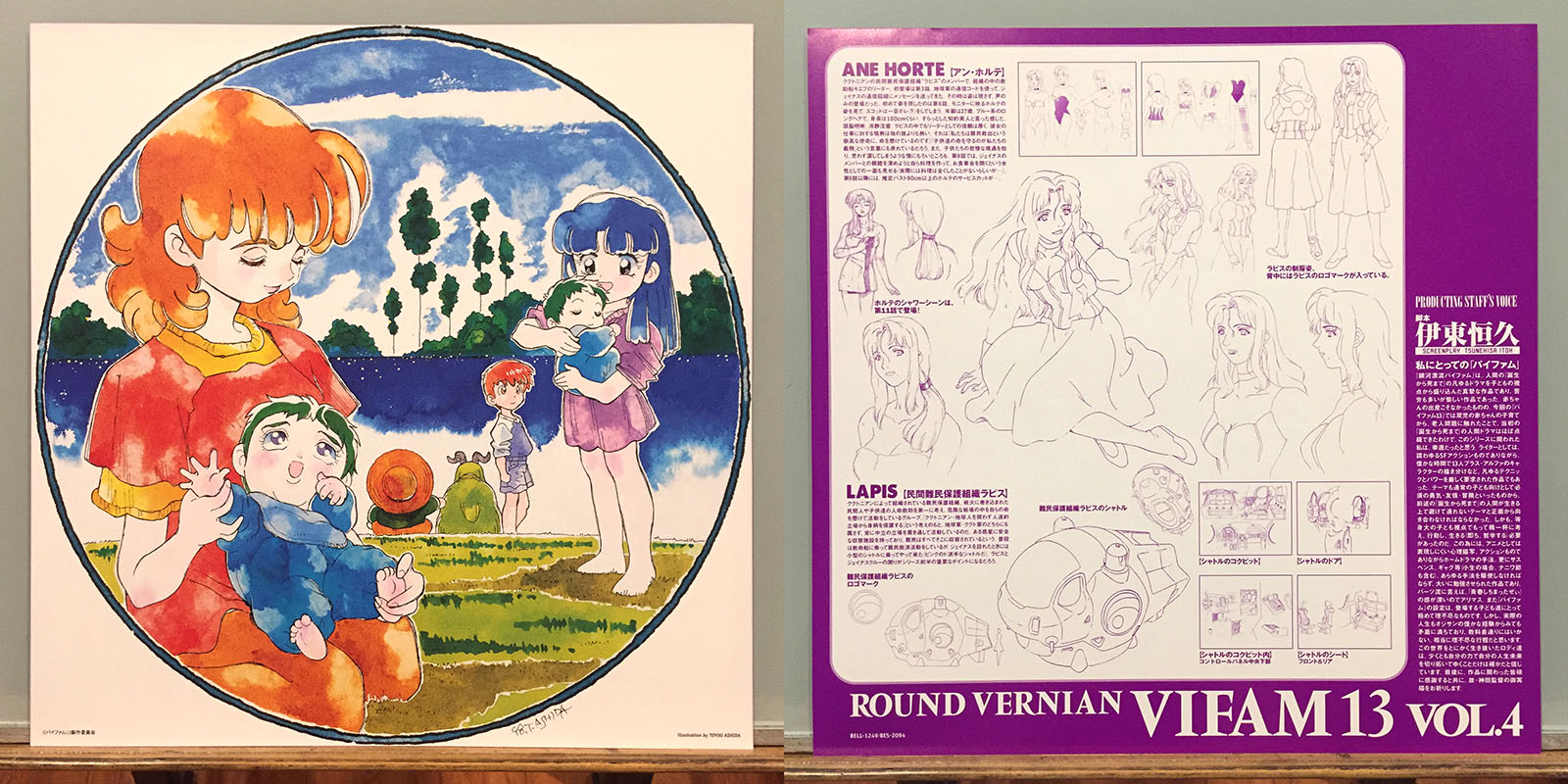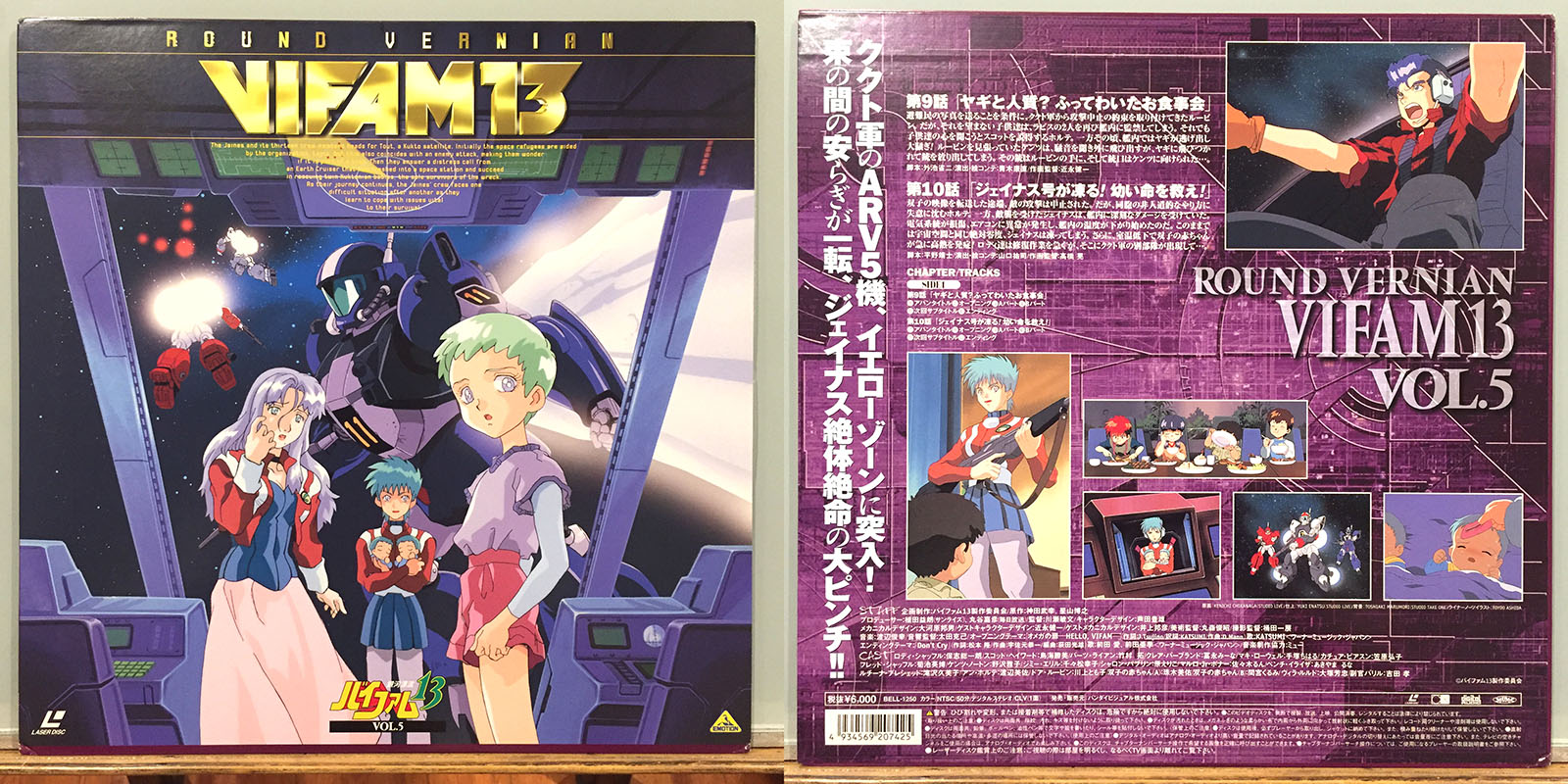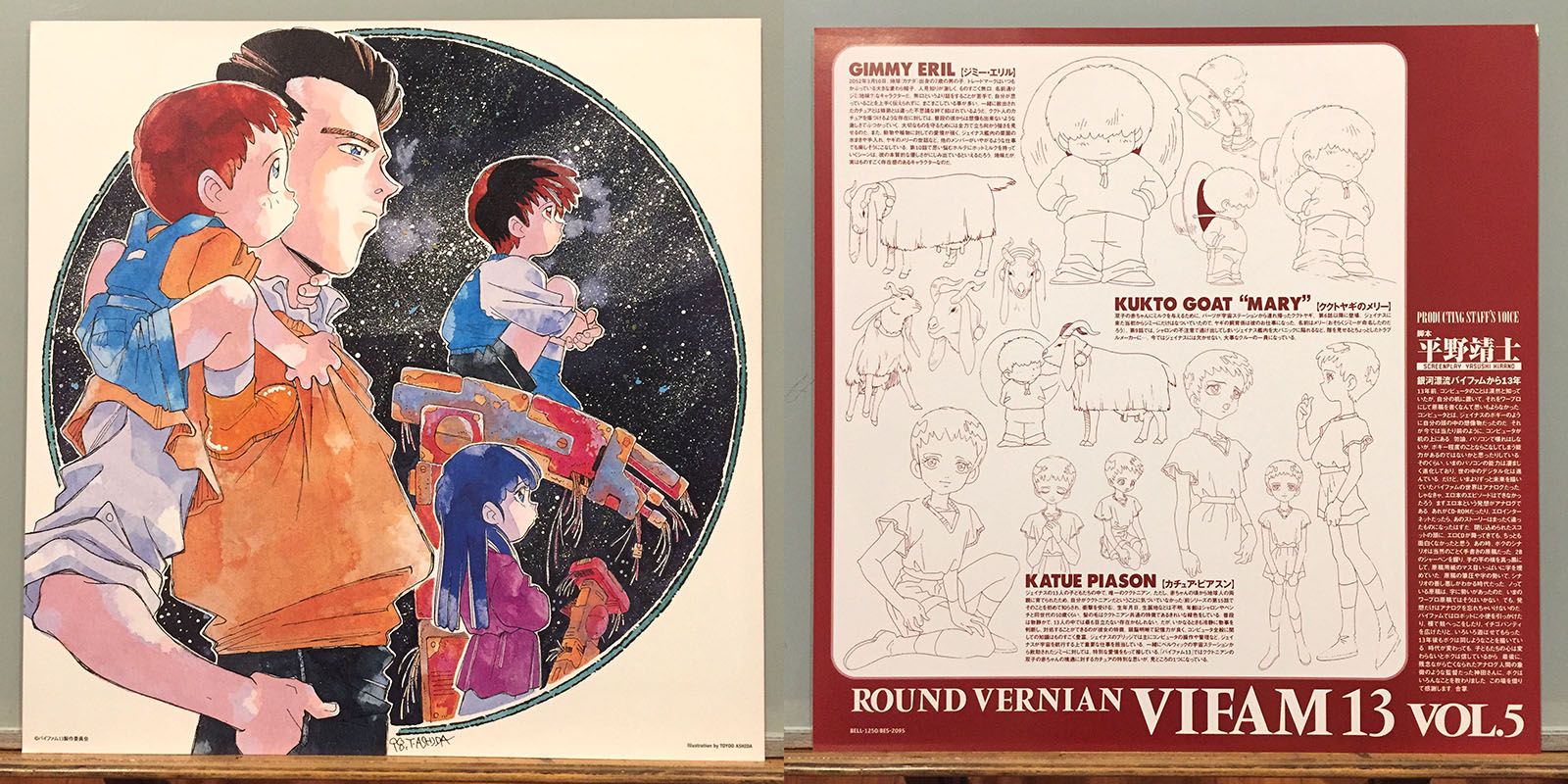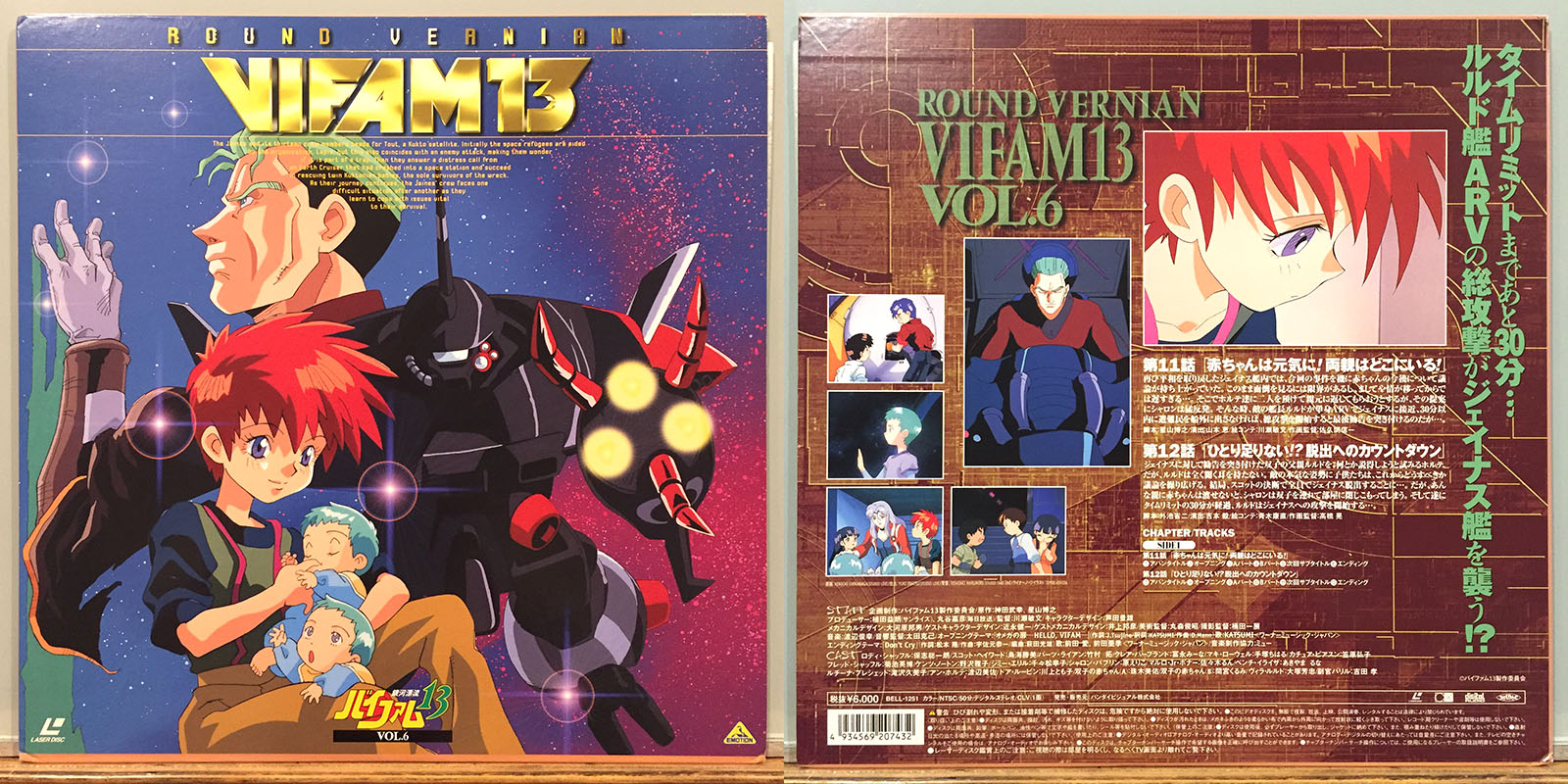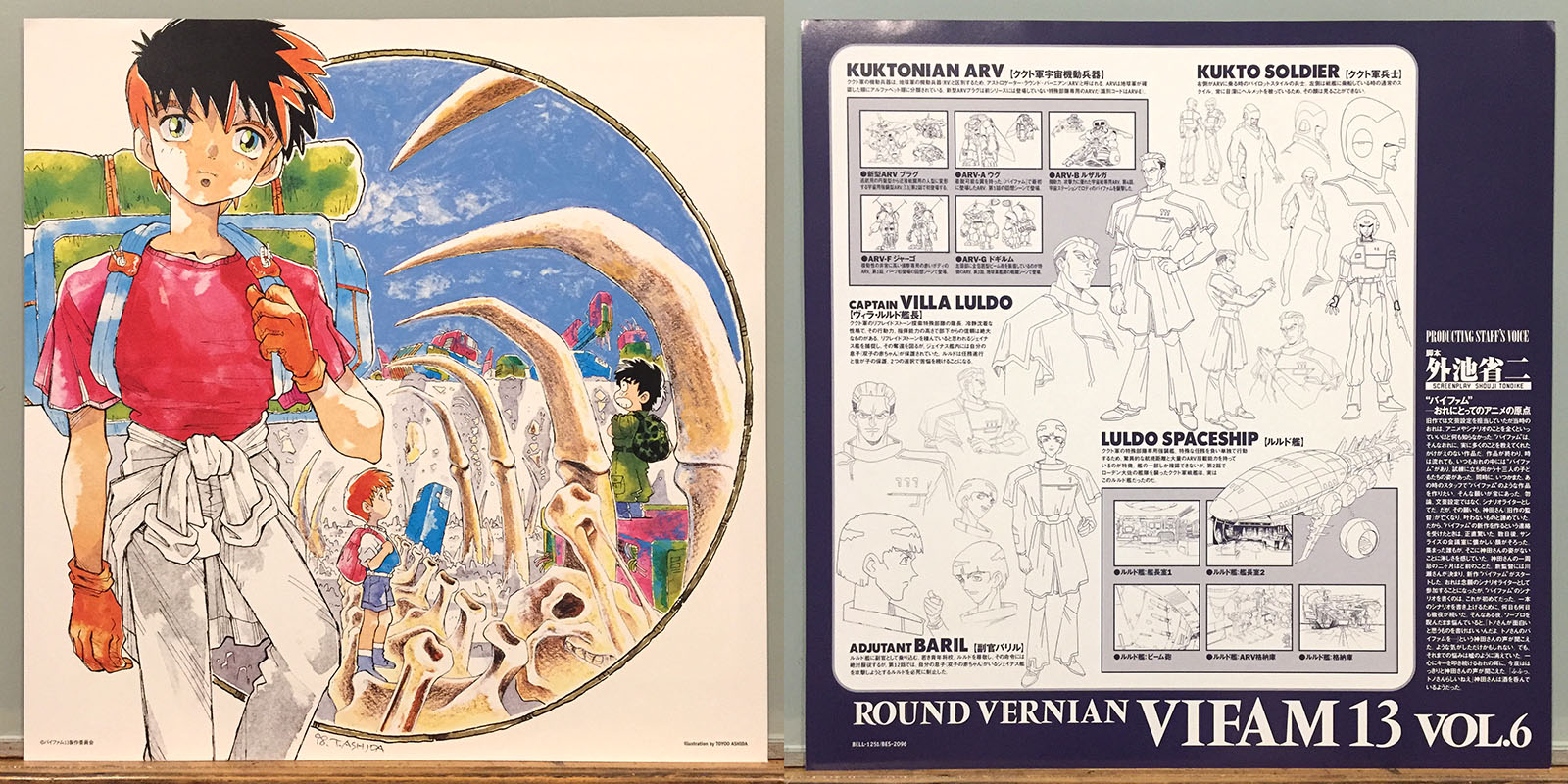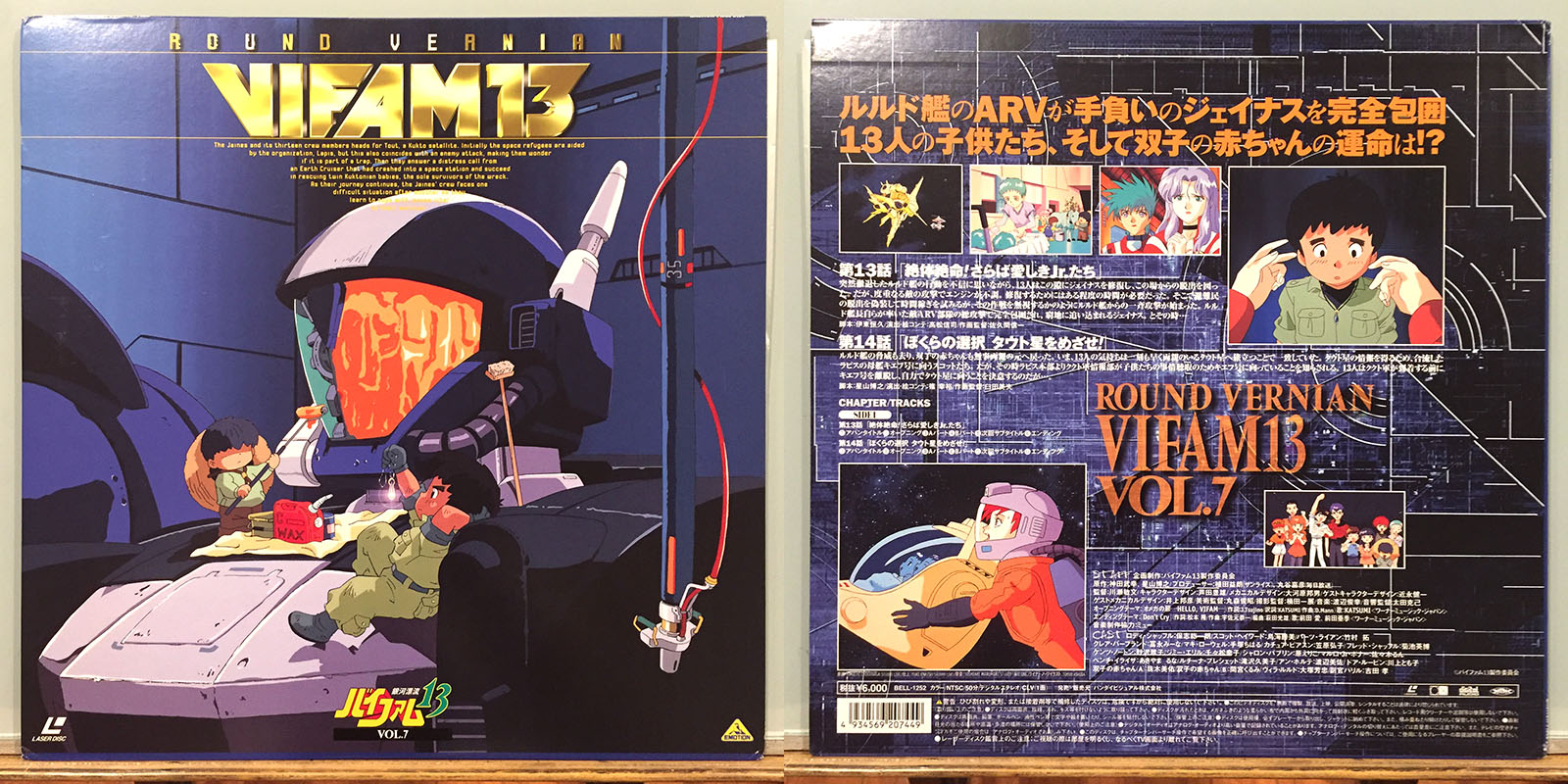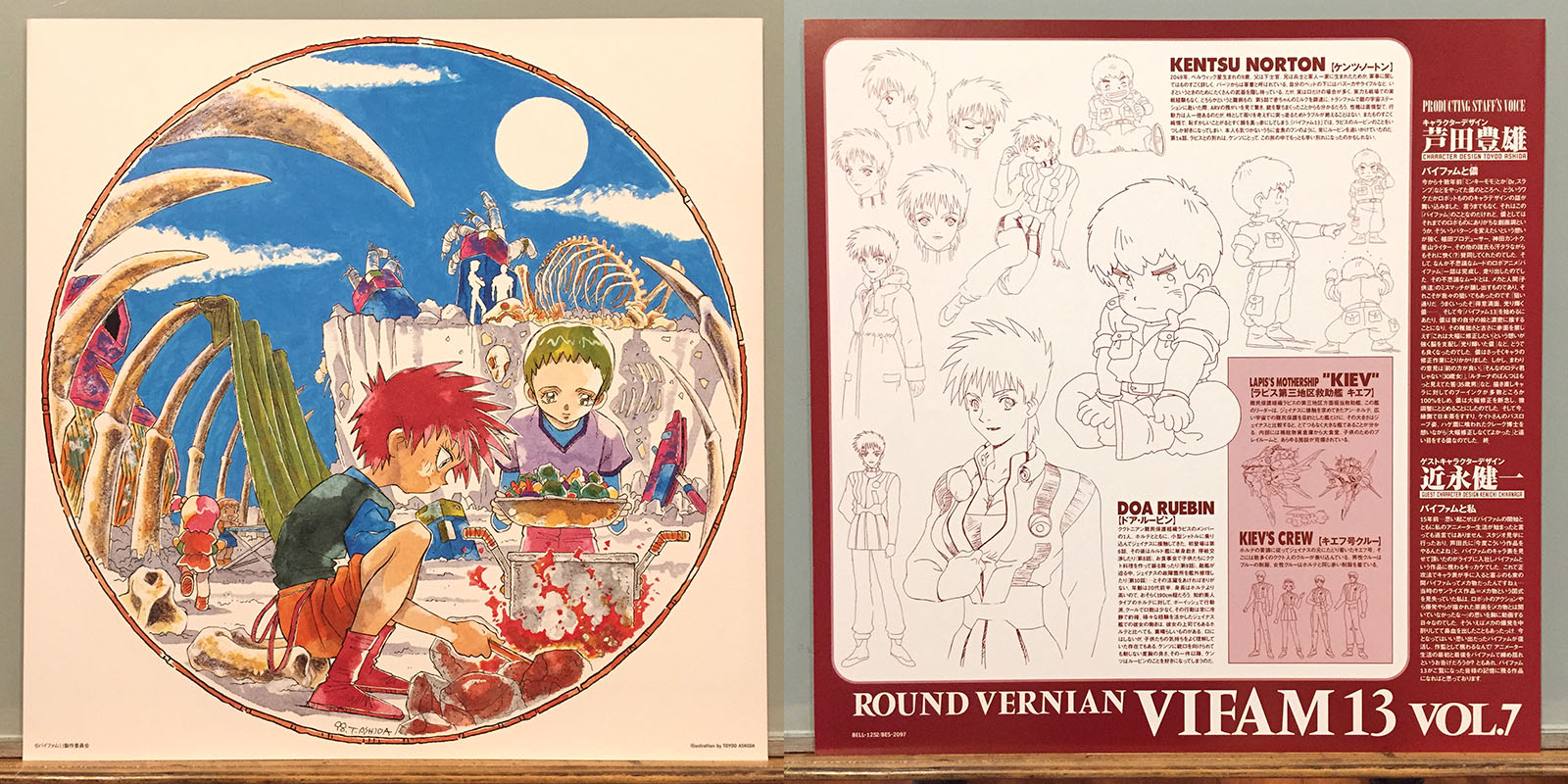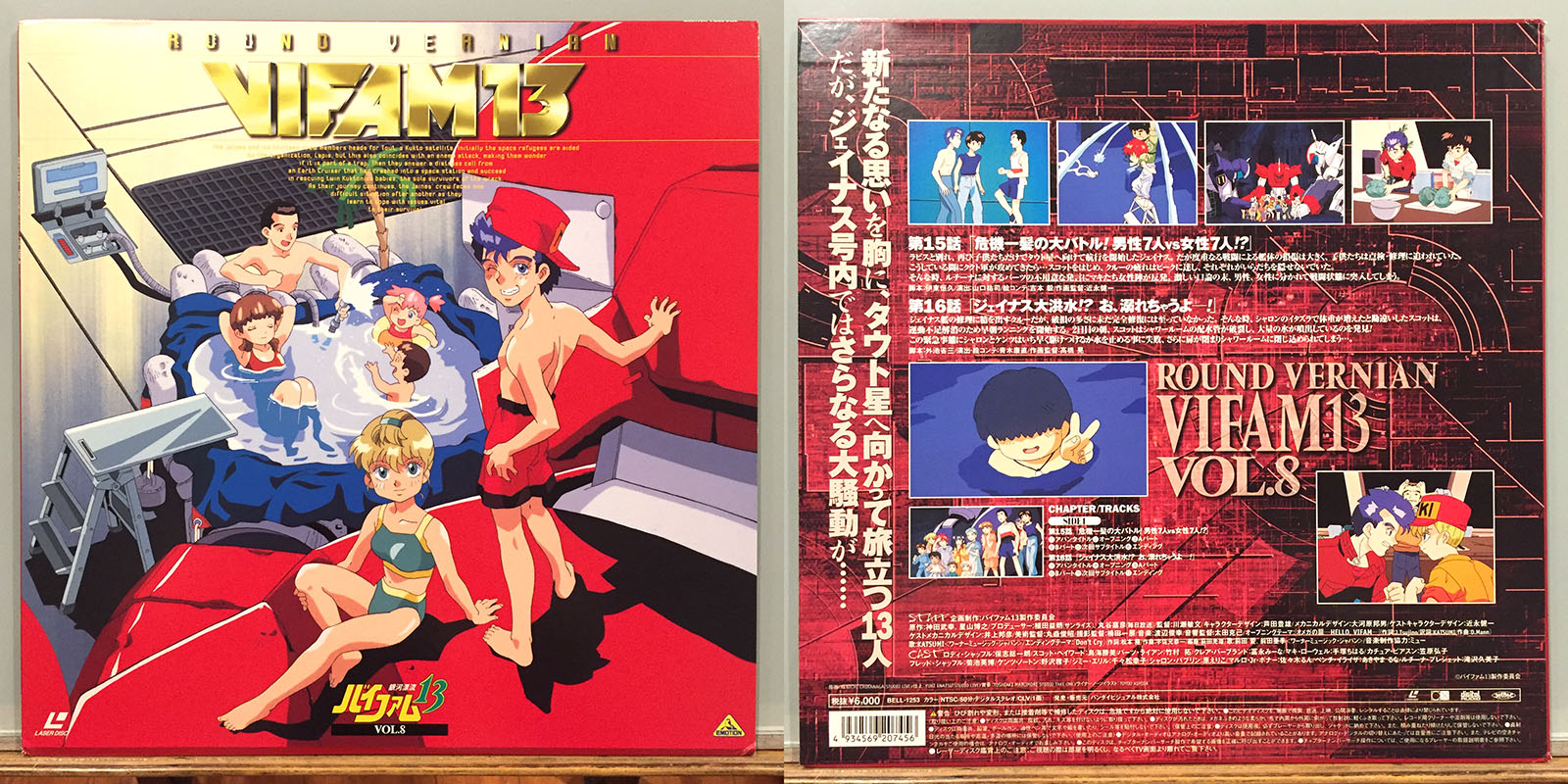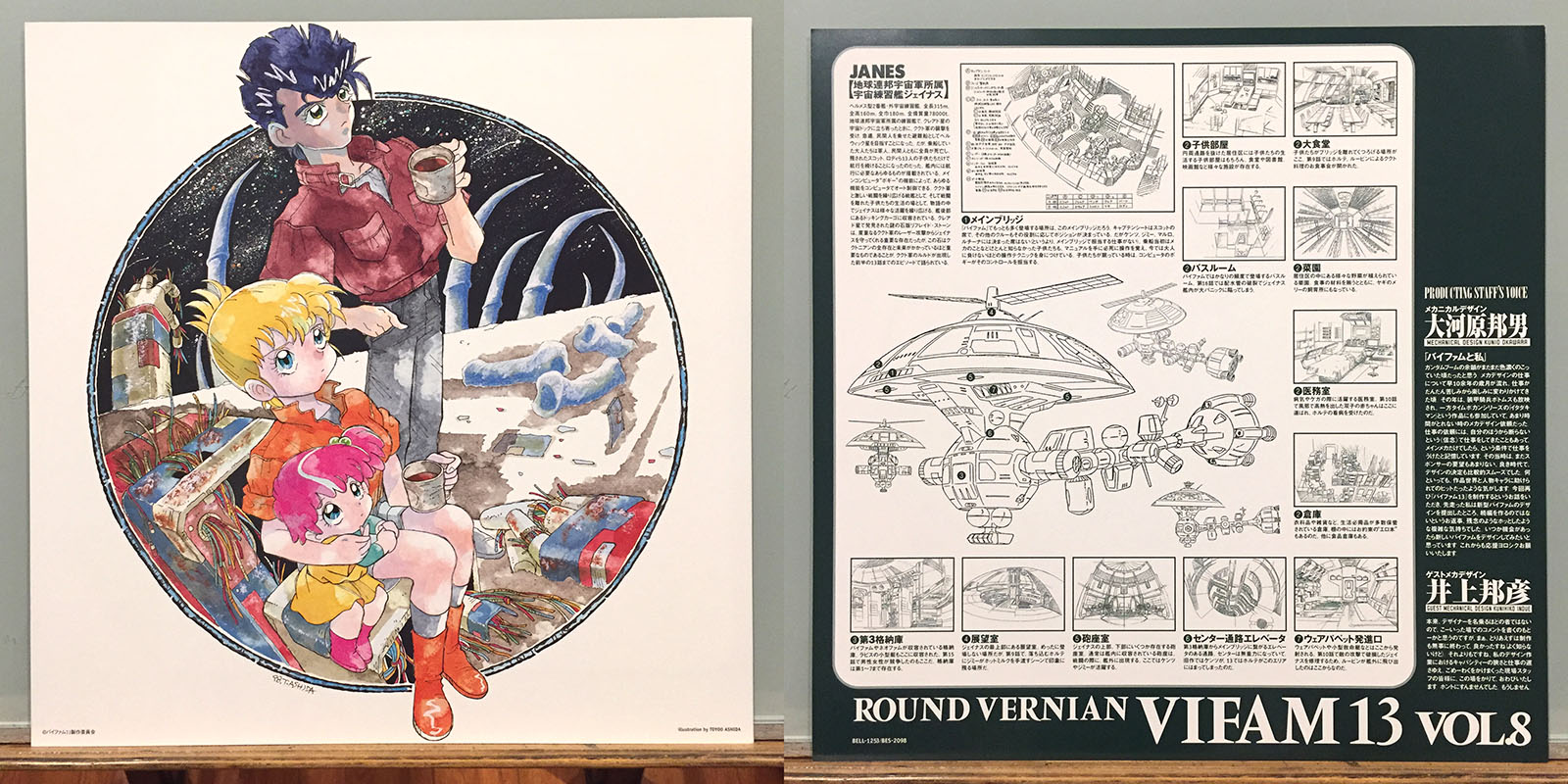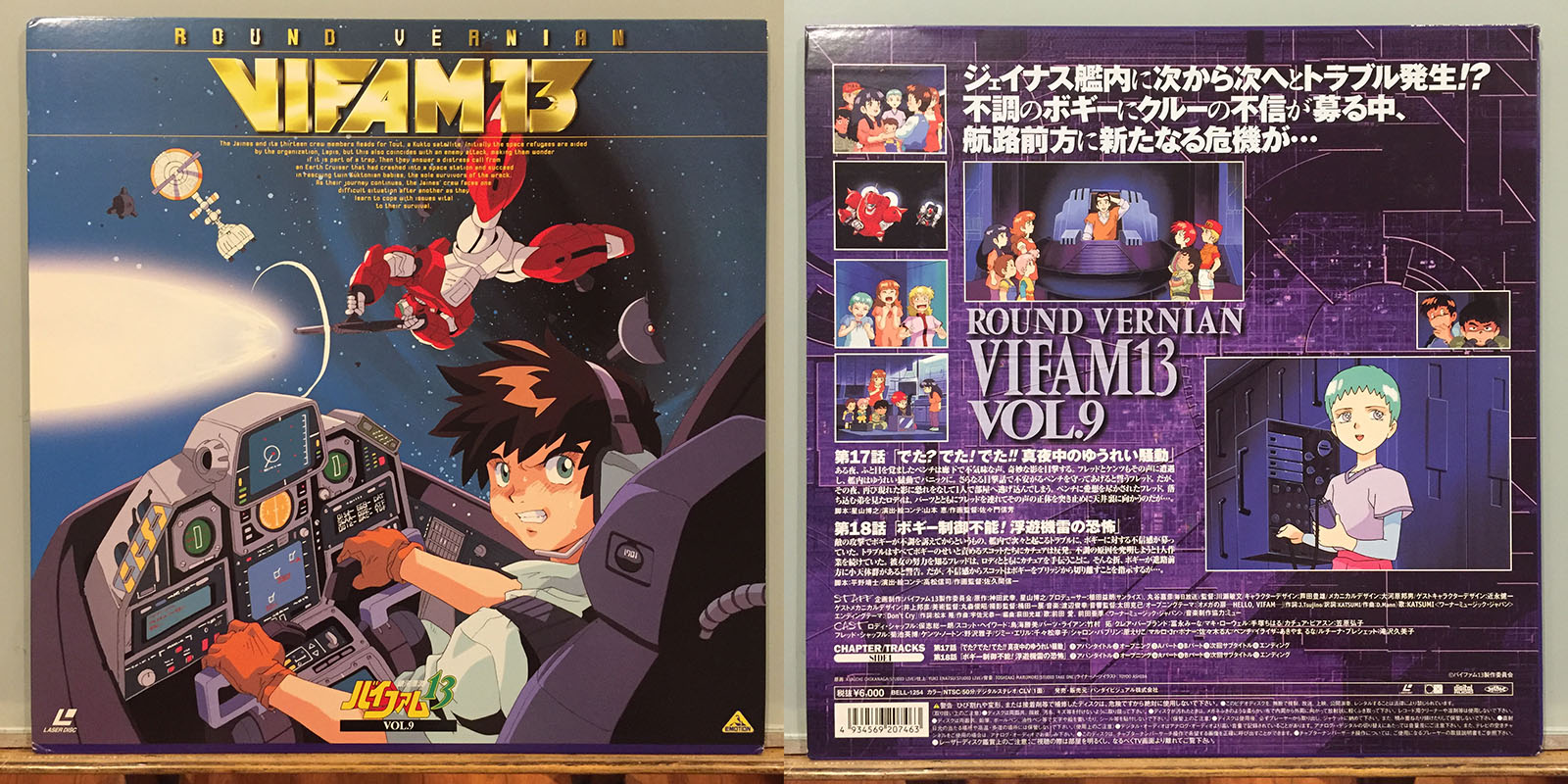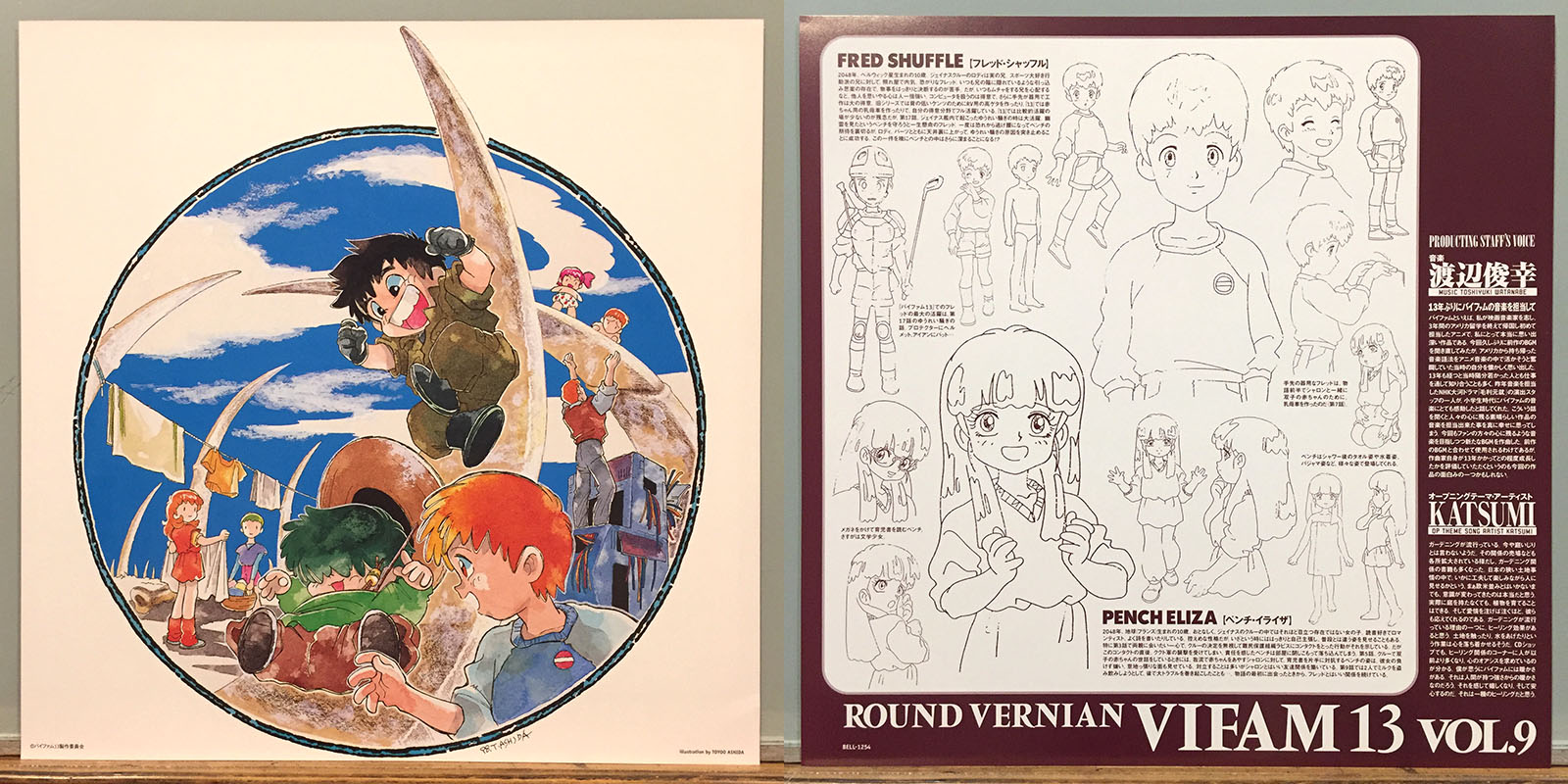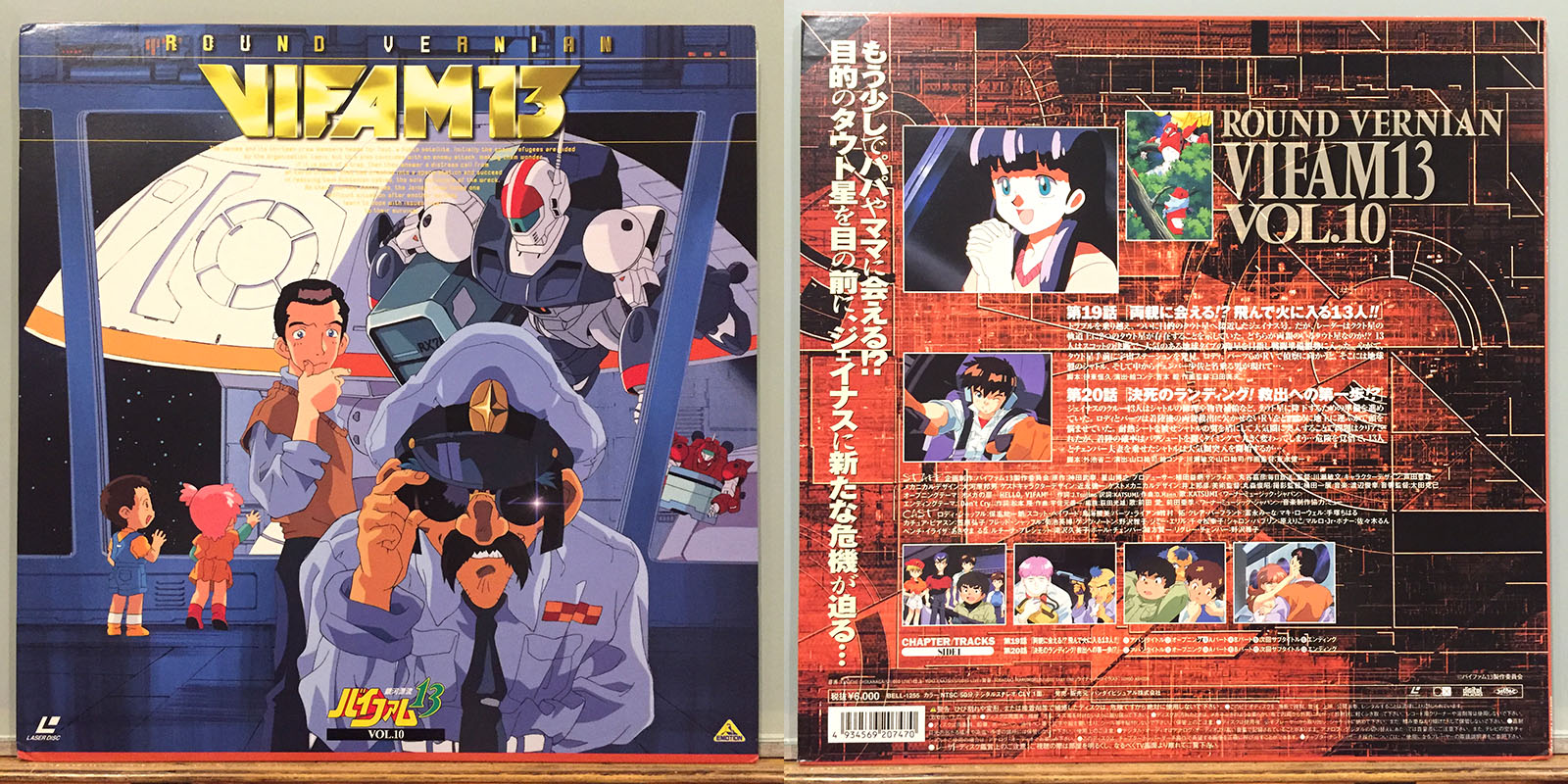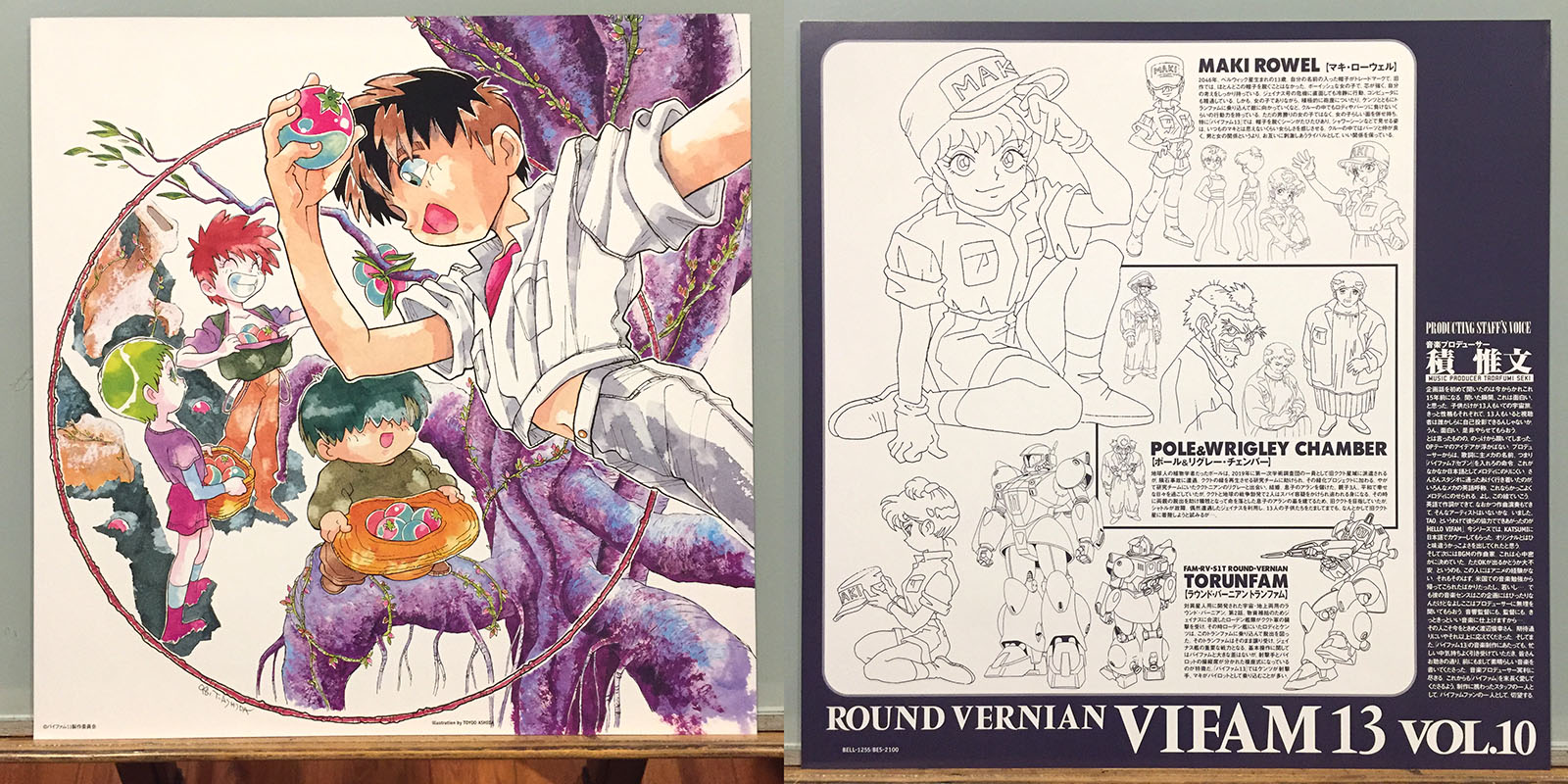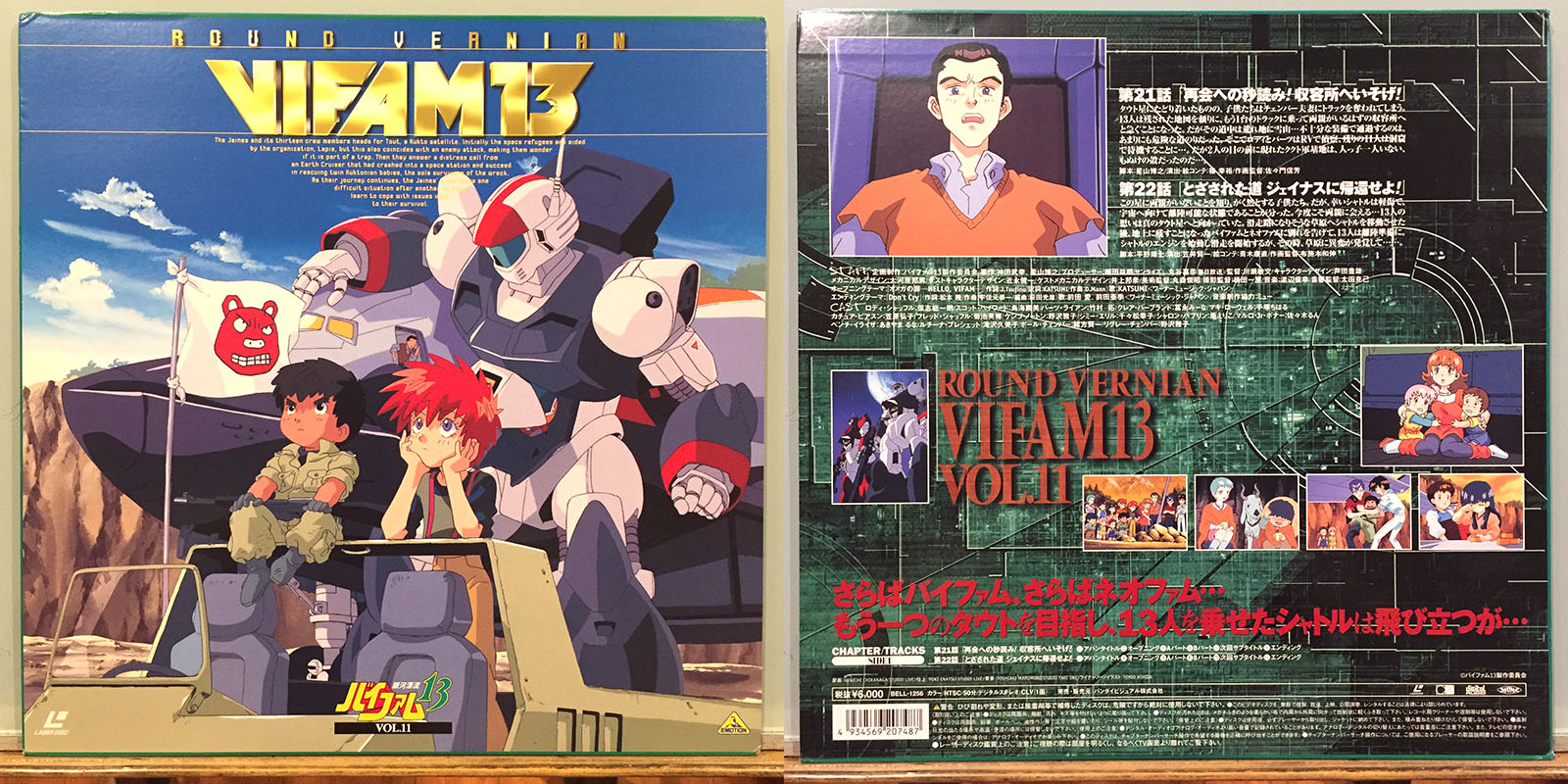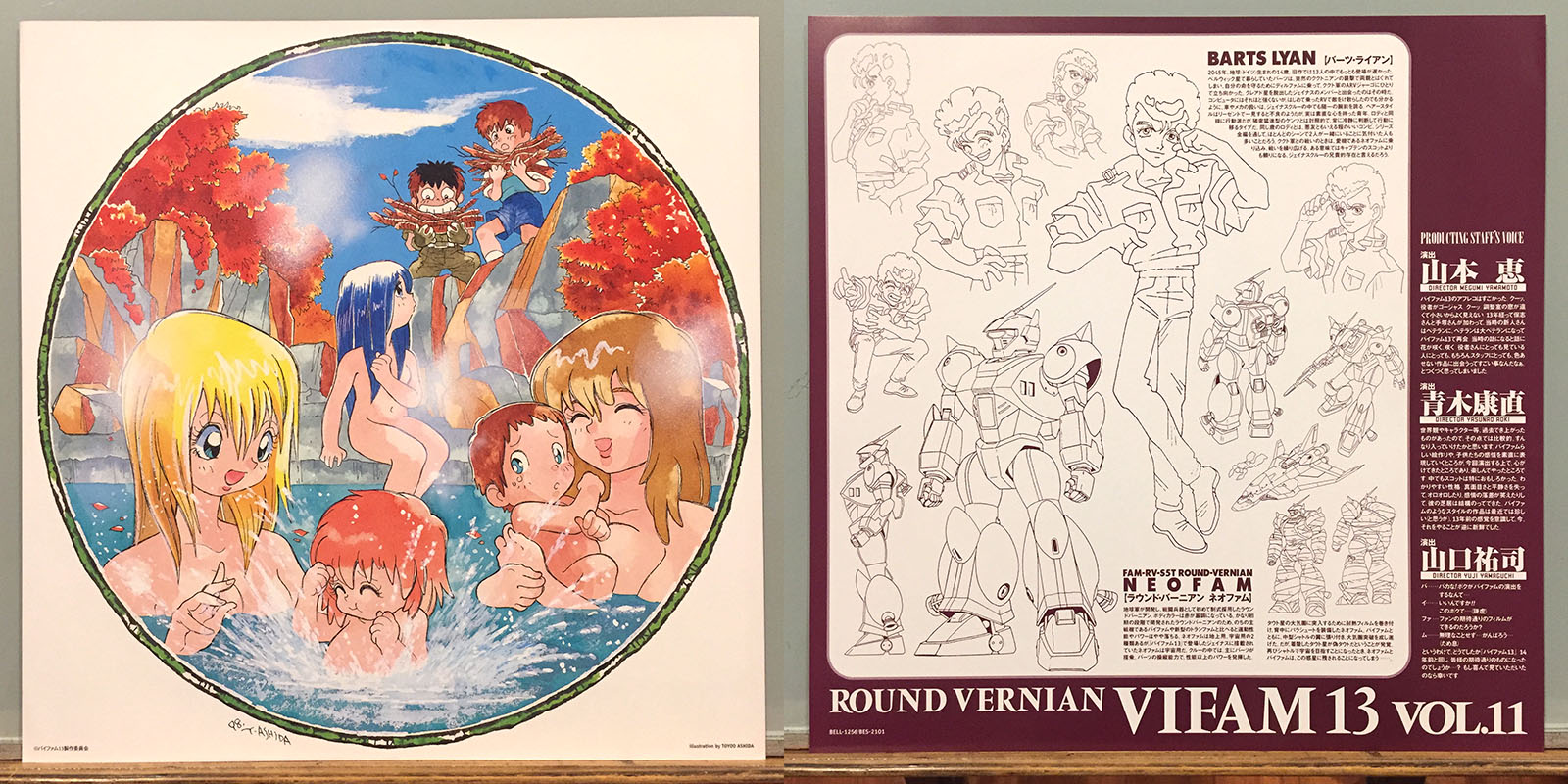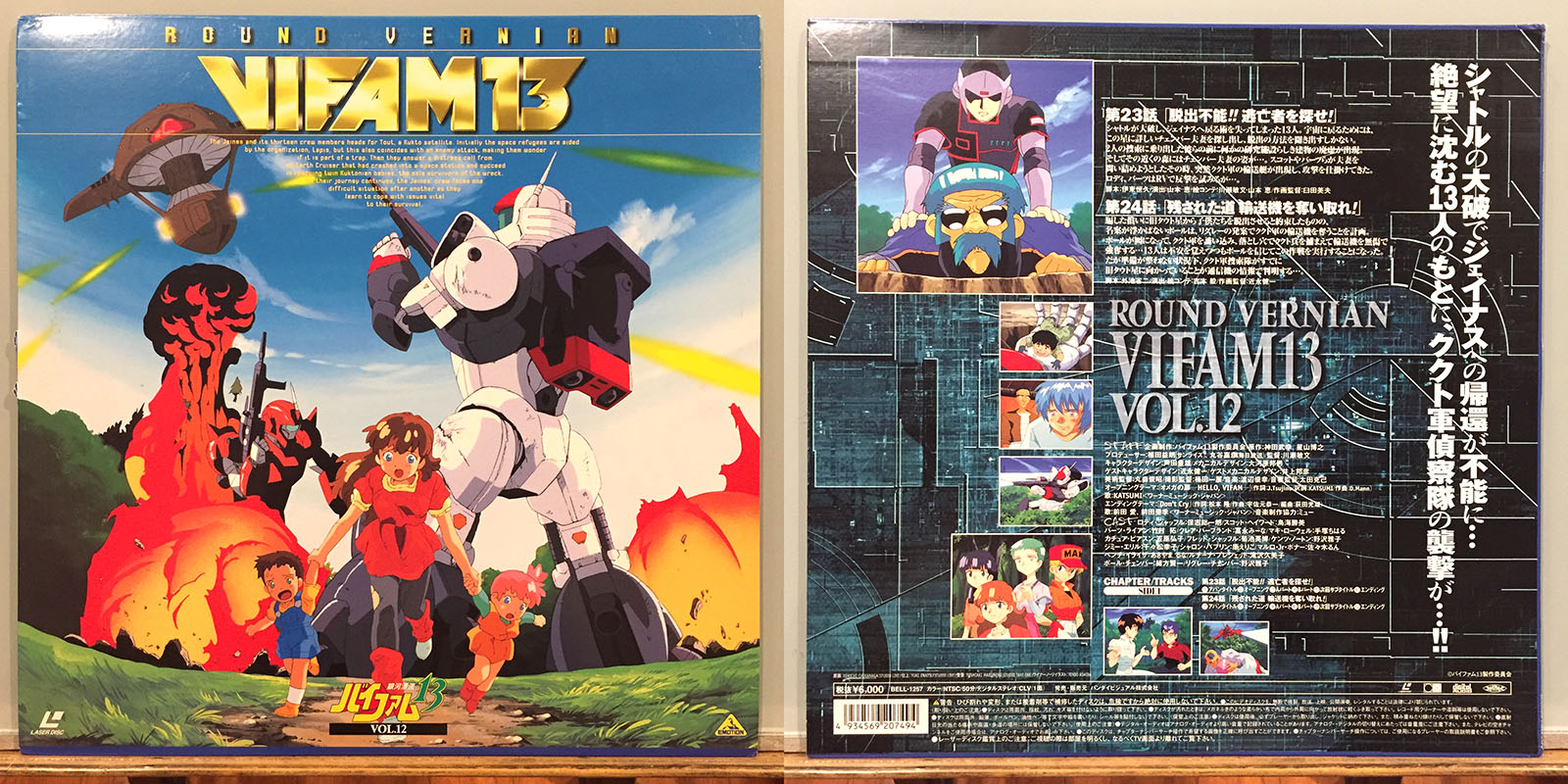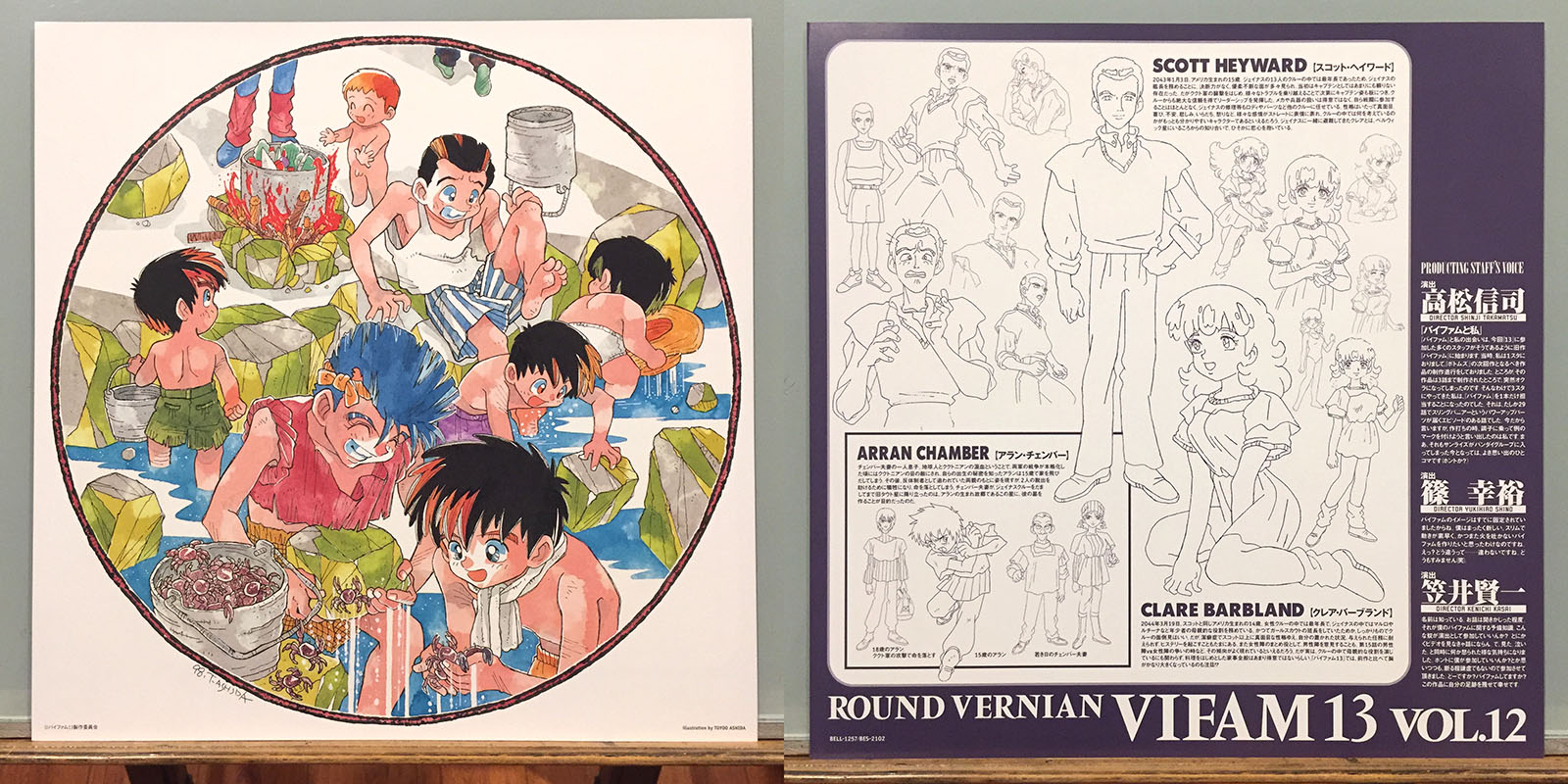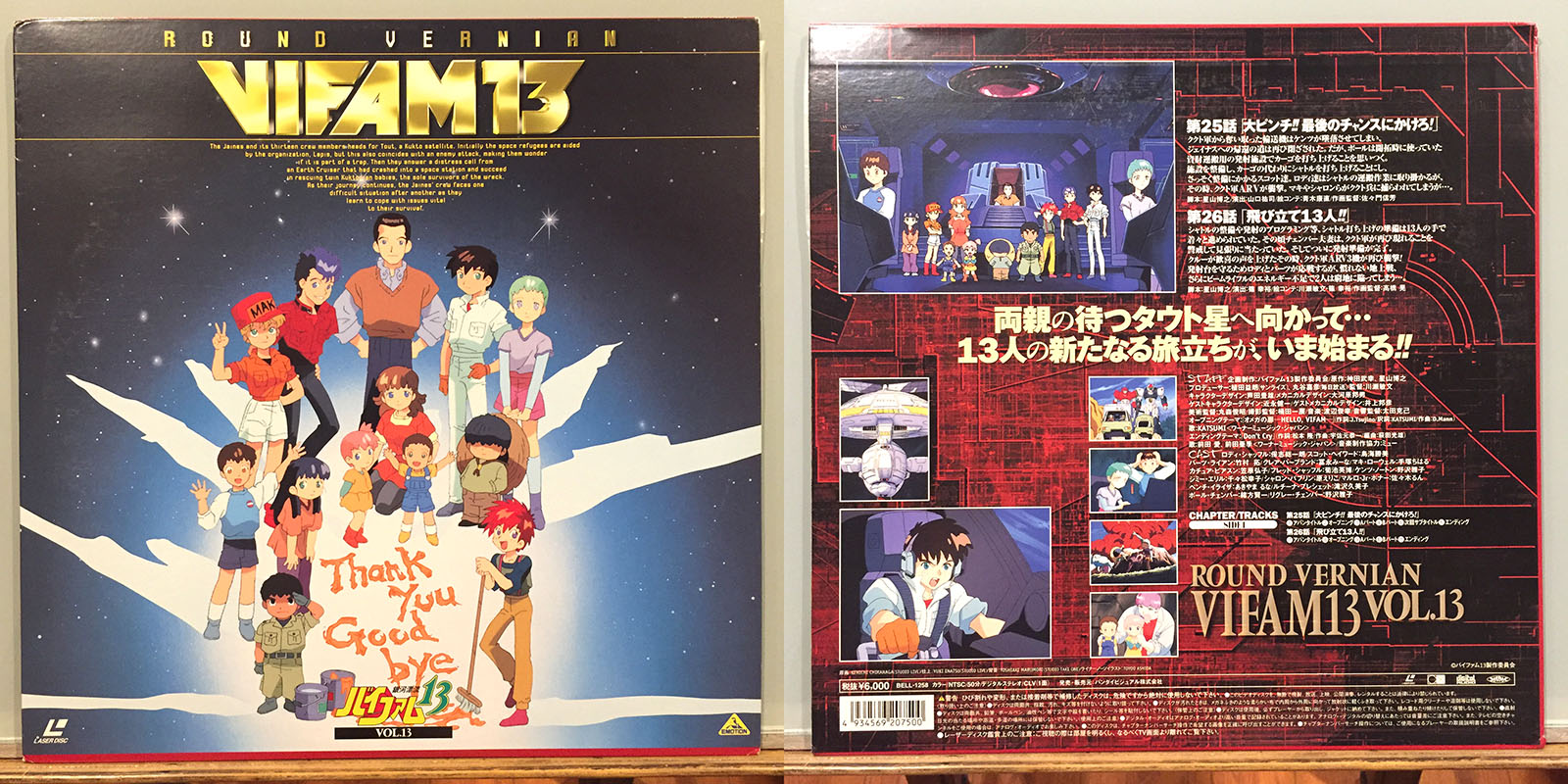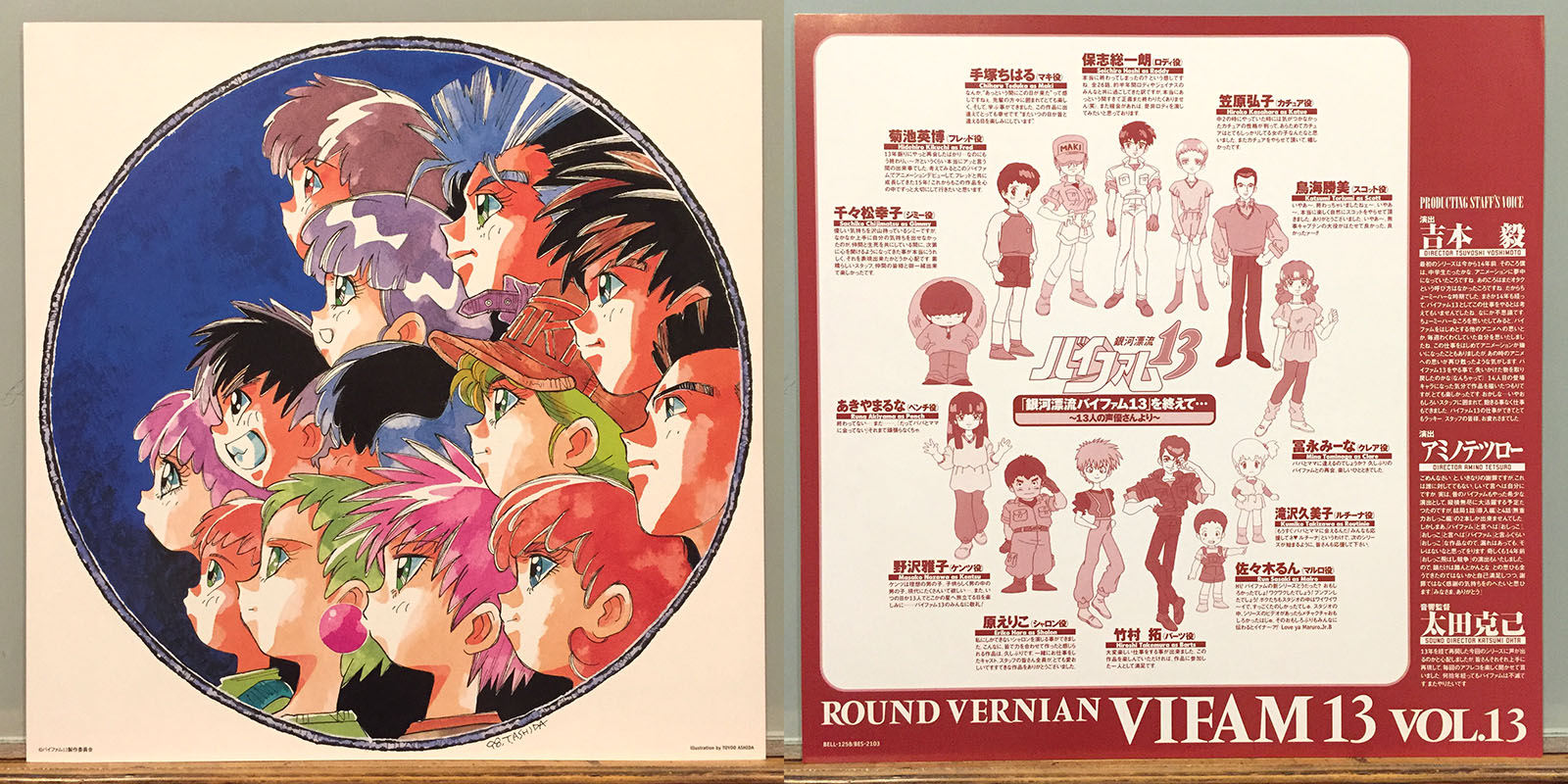All about Vifam 13
More than a decade after the Vifam TV series and its OAV spinoffs concluded, seemingly for good, a miracle happened: we got more Vifam!
Sequels and spinoffs are not at all rare in anime (just ask a Gundam fan if you need proof), but a series that puts you right back in the middle of a previous series is probably rare enough to qualify as one of a kind. That’s what Vifam 13 did; created an additional 26 episodes that fit snugly into the midpoint of the original.
To be more specific, the first half of Vifam originally concluded with Episode 23, and then two flashback shows gave the staff time to get ahead on the second half. Vifam 13 essentially replaces those two fillers with additional stories of the children dealing with new threats. It was only broadcast once, from March to October 1998, properly positioned in the middle of a full-on 15th anniversary Vifam rerun that allowed viewers to experience the entire story end to end.
The Vifam aesthetic often made English a part of its presentation, and this led to the following English text on the video releases:
DVDs: By 2058, human beings have expanded their habitation even to a planet 40 light years away from Earth. War had broken out between humans and aliens. A space vessel called Janus consisting of crews and civilians faces a number of attacks from the aliens and only thirteen kids survive. The group of thirteen heads toward Tout, a planet where their parents are supposed to have emigrated.
Laserdiscs: The Janes and its thirteen crew members head for Tout, a Kukuto satellite. Initially, the space refugees are aided by the organization Lapis, but this also coincides with an enemy attack, making them wonder if it is part of a trap. Then they answer a distress call from an Earth cruiser that had crashed into a space station and succeed in rescuing twin Kukutonian babies, the sole survivors of the wreck. As their journey continues, the Janus‘ crew faces one difficult situation after another as they learn to cope with issues vital to their survival.
As can be expected, Vifam 13 looks much slicker than its predecessor. The animation is cleaner and smoother, the character art is more consistent, and the overall production values reflect standards of the 90s. Sadly, the original director had passed away by this time, but the producer, character and mecha designers, three members of the writing team, the soundtrack composer, and several of the animators returned to the fold, along with eleven of the thirteen main voice actors (all but Maki and Rodey).
For a full credit list, see Anime News Network’s Vifam 13 page here.
Merchandising for the show was only a fraction of the original, which was typical of most 90s anime. The viewing audience wasn’t much bigger than in the 80s, but their attention was spread thinner over exponentially more shows to choose from. Ratings were good, but merch pretty much began and ended with home video sales. What that means to us outside Japan is that few people know about Vifam 13 and it has yet to get an import or a fansub. The only way to watch it as of this writing is to actually buy a Japanese edition (which I did, of course). Therefore, the following synopsis will have to suffice until the landscape changes.
The First half: Encounter with Lapis
After parting with an Earth ship (and obtaining a new Torunfam), the children are on their way to planet Tout, where their parents are being held captive. They intercept a transmission from a mysterious woman offering protection for refugees, friend or foe. They decide to ignore it, believing it to be an enemy plot, but Pench, feeling anxious about the journey ahead, secretly replies. Just then, the enemy suddenly attacks. They struggle against the unfamiliar enemy mecha, but succeed in fighting them off. They wonder if the communique had been the enemy’s plan.
They receive a distress signal from Earth’s military, and when they head for it they find an enemy station in ruins. The only survivors are twin babies. The kids rescue them, but discover that the twins are Kukutonian. It turns out that Sharon knows how to handle babies, and they decide to take care of them. (Interestingly, this is based on a story concept that was developed for the original series but went unused.) Meanwhile, the enemy forces chasing the Janus begin to move in secret, and a long-range bombardment becomes increasingly fierce.
A small ship carrying two women named Anne and Doa, from the refugee protection organization Lapis, comes into contact with the group. They were the ones who sent the mysterious communication. At first, the kids are suspicious and refuse to talk, but they decide to take them in to get information about Earth’s military. Soon after, however, the enemy attack intensifies, and the small ship sends out a transmission to the enemy. This leads Kents and Barts to believe that the two are enemy spies and the boys turn their guns on them. But Anne, the leader of the two, tries to prove her innocence by sending Doa to the enemy ship to stop the attack and offer herself as a hostage.
While Doa tries to convince the enemy commander Lurdo to call off the attack, Anne learns that the only people aboard the Janus are children and decides to do whatever it takes to get them to a refugee camp. Rodey and the others have no intention of going along. Anne is released from house arrest and is overjoyed to organize a dinner party for them to get to know each other. In the midst of it, Kukuto’s army resumes their attack. Anne, who trusted the army, realizes her naivety. The Janus is in absolute danger from the onslaught, but the attacks stop when the kids send a picture of the twins to the enemy ship.
Soon after the Janus is out of danger, another enemy force appears and attacks relentlessly. They manage to escape, but this time the air conditioning malfunctions. The temperature drops and the twins catch a cold. The enemy attacks again, and Doa dares to repair the ship under fire. The thirteen finally forgive her and Anne, who takes it upon herself to nurse the babies. The group leans toward the idea of letting Lapis take custody of the twins. Information about the twins’ parents comes in from Lapis’ mothership. The father, it turns out, is Lurdo, the commander of the pursuit force. Sharon is angered by his all-out attack, knowing that he threatens his own children, and hides in her room with the twins. The attack is imminent. The Janus no longer has the power to resist.
Lurdo tries to be a soldier before being a parent, but his second-in-command stops him. Persuaded by Kachua, Sharon decides to return the twins to their parents. Lurdo shouts, “How can you care so much for an enemy’s baby?” But when he learns that the Janus is crewed only by children who want to see their parents, he realizes their true intentions. Lurdo is so moved by the children’s love for their parents that he lets the Janus go.
Janus joins up with Lapis’ mothership, but when they learn that another enemy is approaching, the kids decide to leave for Tout so as not to cause trouble for Anne and the others.
The Second half: To the Planet Tout!
As the children continue on their way, fixing damage caused by the fierce battles they have fought so far, they approach Tout and find two planets: a barren one and a green one. They decided to head for the green planet, and arrive at an orbital station. Rodey and his friends are captured by an old Earthman. They managed to turn the tables, but he begs them to let him see his son on Tout. In the end, the thirteen repair a malfunctioning shuttle and take the old man, who calls himself Paul, and his wife down to the surface.
Relying on a map Paul has drawn, they descend and head for a camp. But when they arrive, they find the base in ruins. There was no camp here. The group is angry at Paul for lying. They try to return to space, but the shuttle fails to start, and the wing breaks, making it impossible to fly. They are stranded with no way back to the Janus.
The group is almost in despair, but decides to pursue the couple – who disappeared – in order to find another way to escape. They manage to find Paul, but his answer is that there is no way out. He is hunted by the enemy because he is from Earth, and he has lost his beloved son. Desperate for a place to die, he and his wife have come to this planet where they still have memories of their pioneer life. But when they see the spirit of their son in the thirteen children who are searching for their parents, they promise to help.
They try to take out enemy ships that have come to search for them. Just when it seems that all is lost, Paul remembers the launch pad was once used to transport materials. They work together to fix up the old launch pad and convert the shuttle, which is still intact, into a cargo ship that can accommodate people. Paul and his wife have regained their will to live and stay behind as the kids successfully launch back into space and continue on their journey (into Episode 26 of the original).
Left: Vifam Complete Artworks, the only book with production materials from Vifam 13. Right: promotional phone card
Staff comments, 1998
Director Toshifumi Kawase
It was early summer in 1997. I was called by Sunrise’s producer Ueda.
“I’m going to do another Vifam… you should direct it.”
“Huh…? I wonder if you can understand the meaning of that “Huh…?”
For me, Vifam was Takeyuki Kanda’s work, something that has already been completed. Speaking as someone who worked on it, the finale was wonderful. I was amazed at how well it turned out. It was also quite complete.
“Oh, I get it! Sunrise’s specialty is to reuse only the title, but the content will be new.”
“That’s not it. It’s new episodes with the same characters and setting.”
“Oh, man…”
That was my honest feeling when I heard about it.
Mr. Kanda had passed away, and now the arrow of fate was pointing at me. As a result, I got the job. As long as I was taking it, I wanted to portray the characters of the thirteen children in my own lively way. Fortunately, those characters already existed. However, thirteen wasn’t just an arbitrary number. In Vifam, there is no such thing as a hero. In other words, all thirteen children are the hero. In other words, if you don’t depict these characters as much as possible, you won’t bring out the charm.
Then, how far could we delve into these thirteen characters? This was my own challenge. With this in mind, I added the number “13” to the end of the main title. That number is not usually a favorite honorific, but it is the theme of my biggest challenge, to work on Vifam. As of this writing, production is almost halfway through. I’m not sure if I’ll be able to live up to my own theme, but I’m trying to run toward it anyway.
That’s the main reason why I’m doing Vifam.
Producer Masuo Ueda (Sunrise)
I wonder why it was Vifam now. Oddly, it was 14 years ago, when anime was at its peak. At that time, 45 TV anime were broadcast every week. I was awarded the fan grand prize at the now defunct Japan anime awards. It was a result of viewer’s vote. I was very happy.
Not long before that, when the show was about to be cancelled, many fans signed a petition. I was very happy. I wrote thank you postcards to the people and organizations who had signed the petition. All of us at the studio wrote them together. I still remember those days.
Two years ago, Mr. Kanda, who worked with me as a director, passed away. I was very sad and disappointed. I lost one of my friends. At that time, I wanted to see my friends again. My motivation was very personal, but as a professional anime creator, I wanted to make Vifam again. My thoughts weren’t about where I was 14 years ago, but about what I wanted to put out into the world.
I want people who were crazy about Evangelion to see Vifam 13, just like the old Vifam was seen by people who were crazy about Gundam. And of course, I want the old fans who grew up with me to see it too. This is the starting point for all of my anime work.
I wanted to enjoy it again with the fans who supported this work that gave me confidence. Please forgive me, everyone involved. I’ll do my best so that there won’t be a petition asking me to cancel this show. Please support us.
Producer Yoshihiko Marutani (Mainichi Broadcasting System, Inc.)
I still have a VHS tape of the last episode of Galaxy Drifter Vifam, broadcast on September 8, 1984. Just after the second half started, a news bulletin came up with the usual alert sound. It was a caption saying that a bank in Osaka had been broken into by a robber with a hunting rifle.
When I saw it at home, I was angry because it was the last episode of the series. But now I think it was a good memorial. TV is a medium that has been developed to convey the “now,” after all. Whether it is a detective story from the 1940s or a depiction of boys and girls in 2053, TV always conveys the “now.
For the new series Vifam 13, I worked with the old producers and writers, and we came up with a series of stories. I’ve been working with the same voice actors as in the previous series, but the “now” inevitably shows up somewhere. As long as humans cannot go back or forward in time, I would like to make a more comfortable and moving “now” for people who watch TV and videos.
Music
Toshiyuki Watanabe, who created the lush score for the original Vifam, returned to expand it for Vifam 13. He reused many of his original compositions, which was a wonderful gift for nostalgic fans, and added plenty of new pieces to the mix. He is also known for Dragonar, Captain Tylor, Space Brothers, and more. See his credit list at Anime News Network here.
Opening and ending title CD singles: Gate of Omega, Hello Vifam is a new arrangement of the original with Japanese lyrics; see the opening title on Youtube here. Don’t Cry is a new end title; see it here.

